This case study presentation summarizes and highlights two projects I led during my time at Steve & Kate’s Summer Camp that exemplify a human-centered design and build process. It describes the ways I balanced competing needs, quickly made impact for users while building towards larger goals, and delivered two products, Springboard and The Pool , that solved real-world problems for kids, parents, and staff.
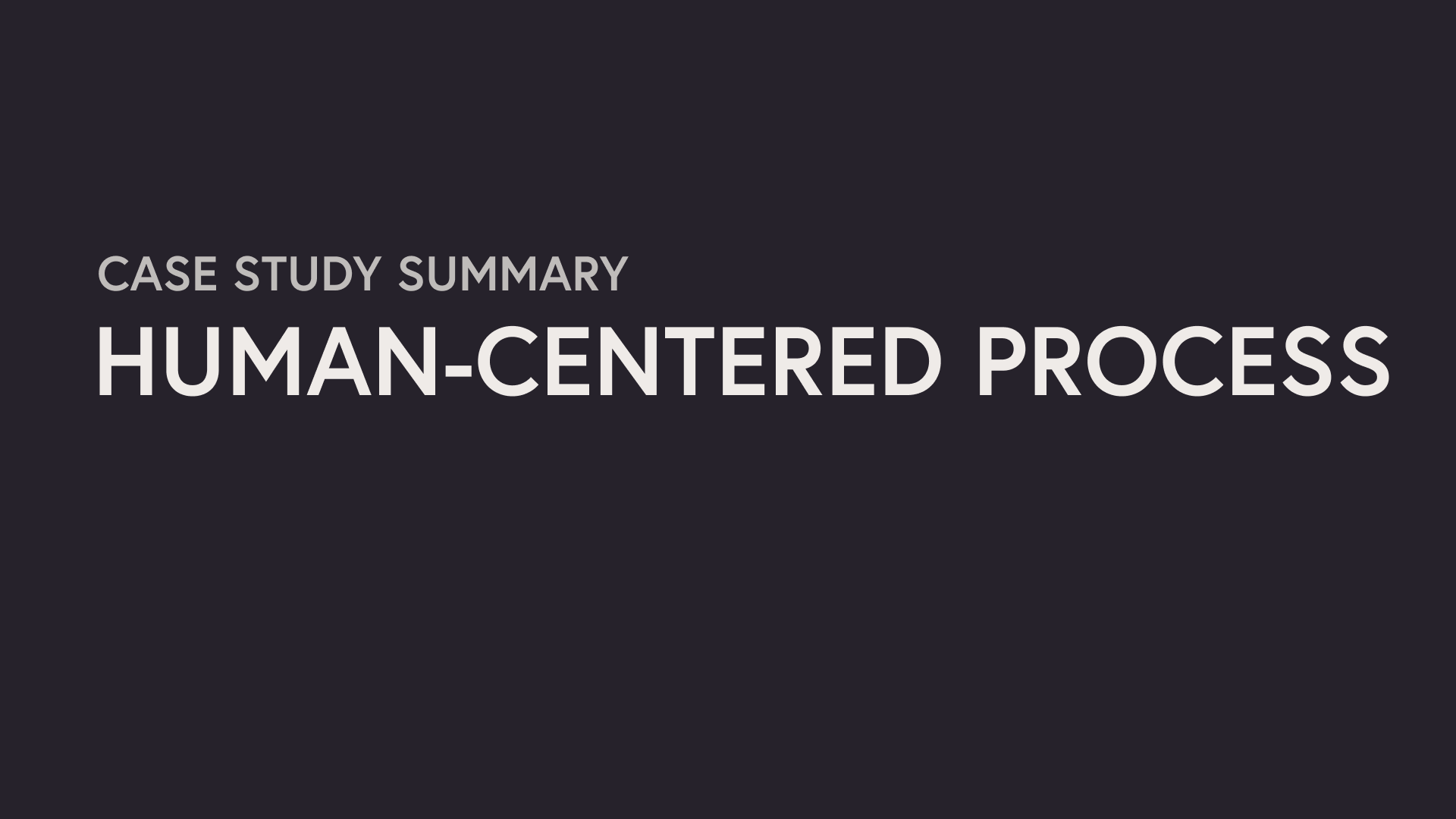
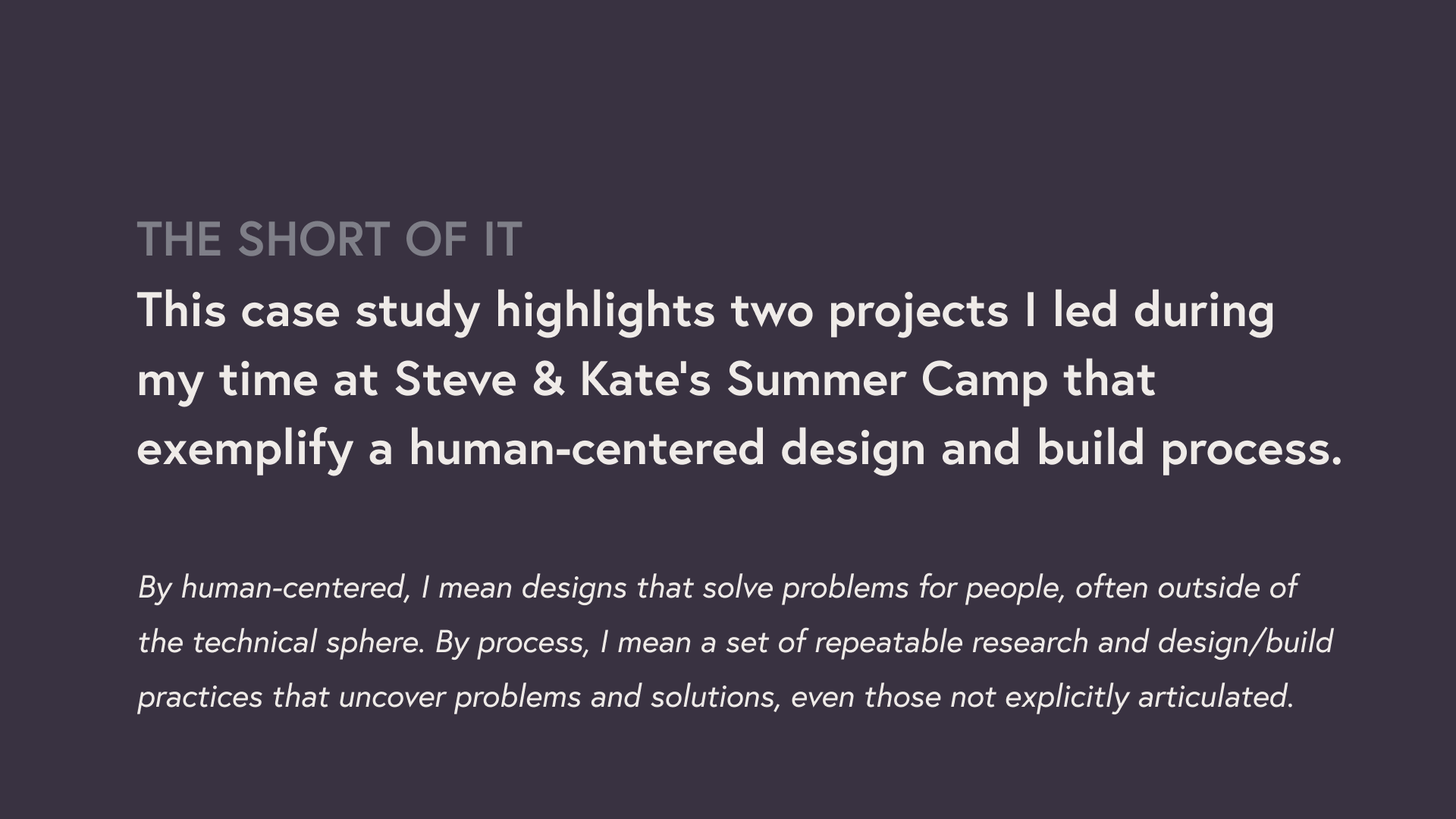
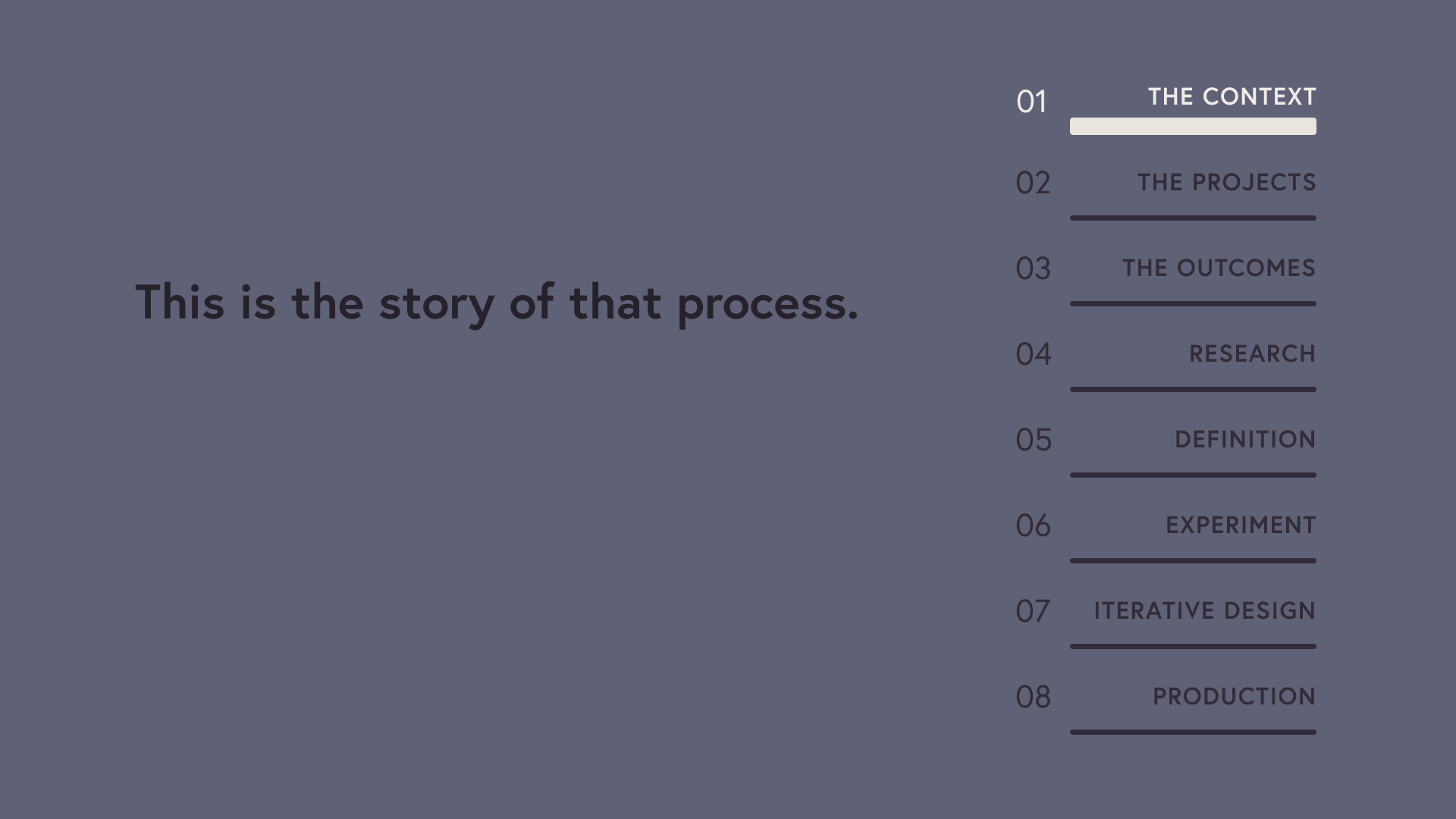
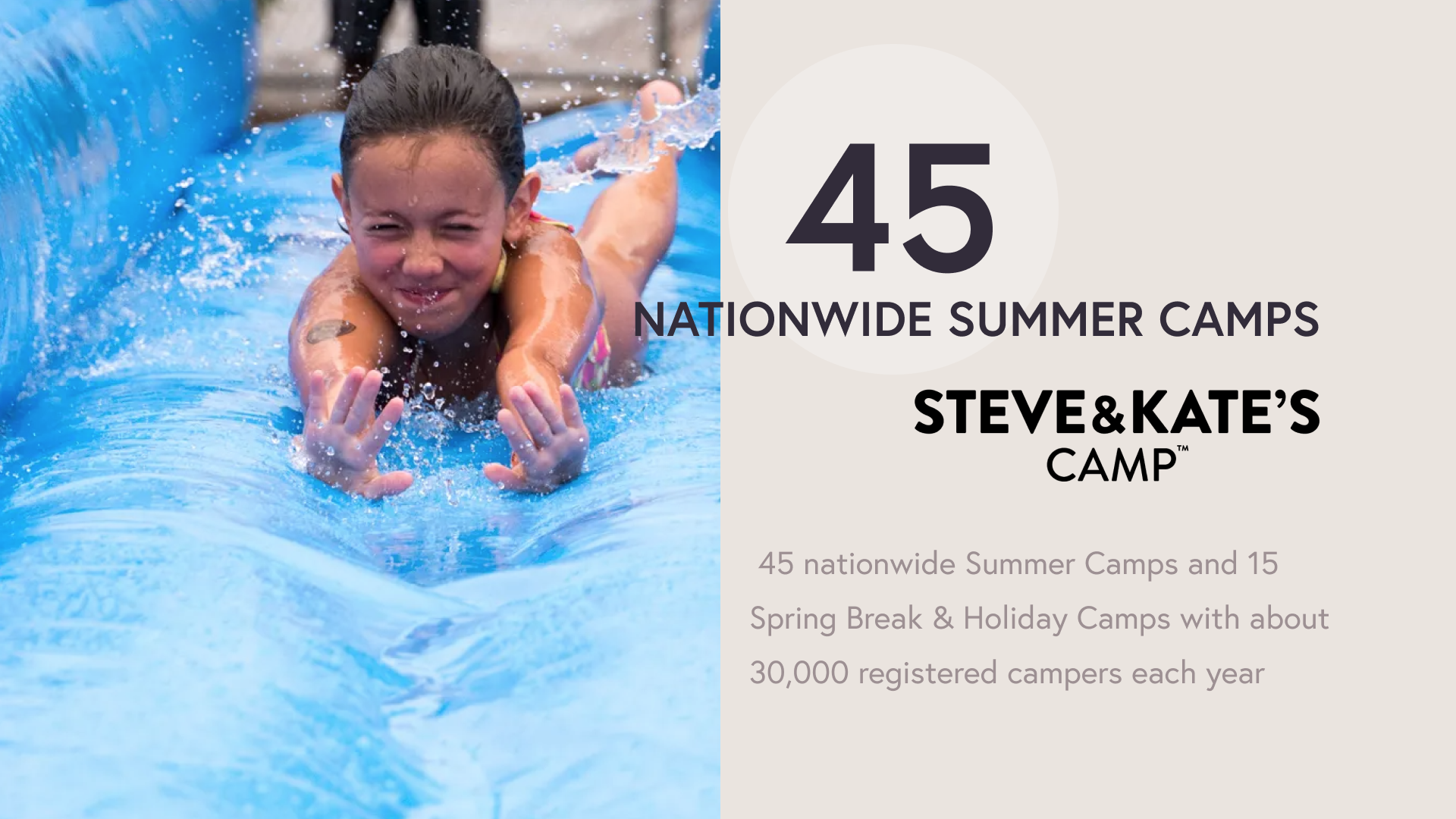
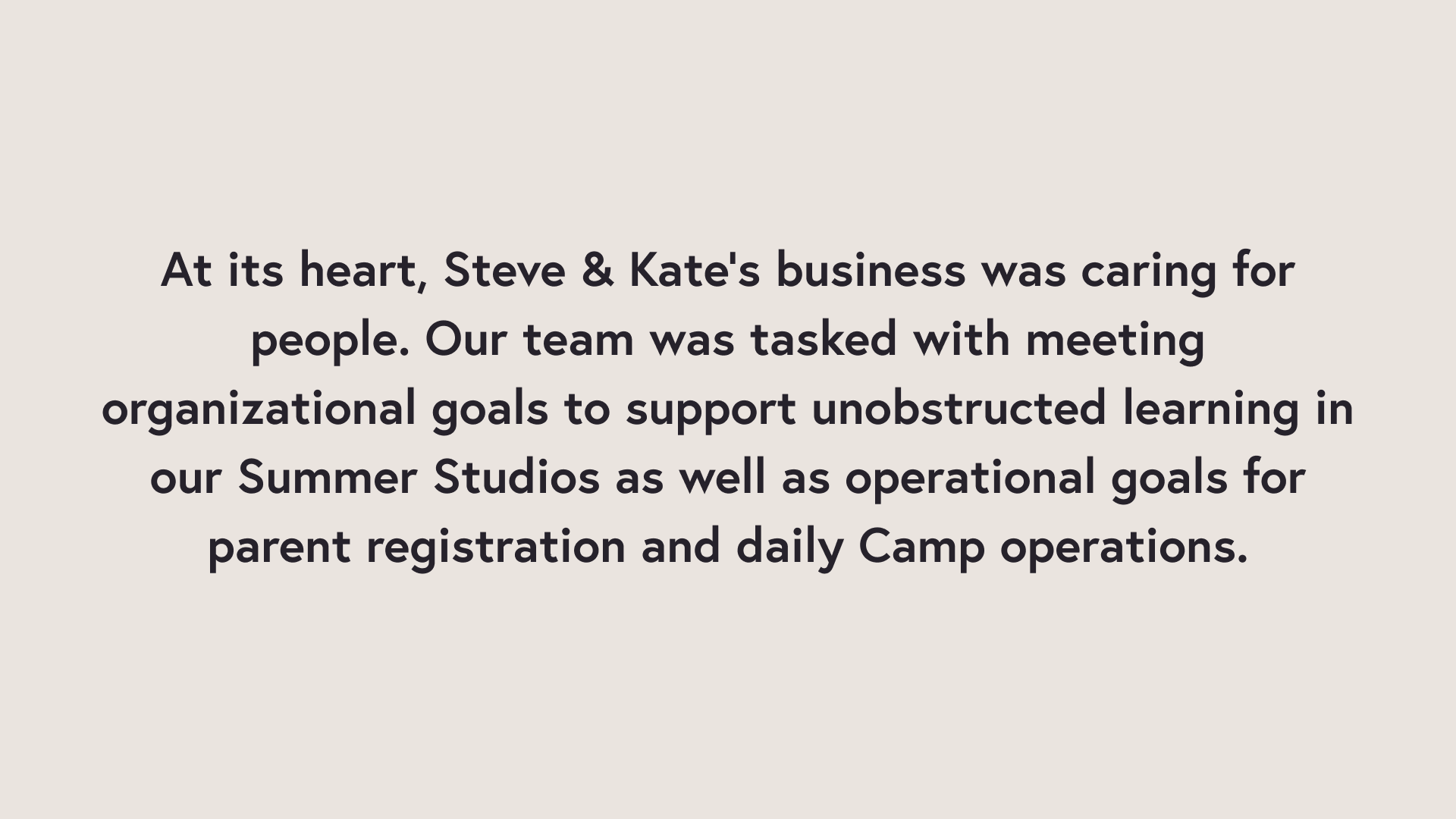
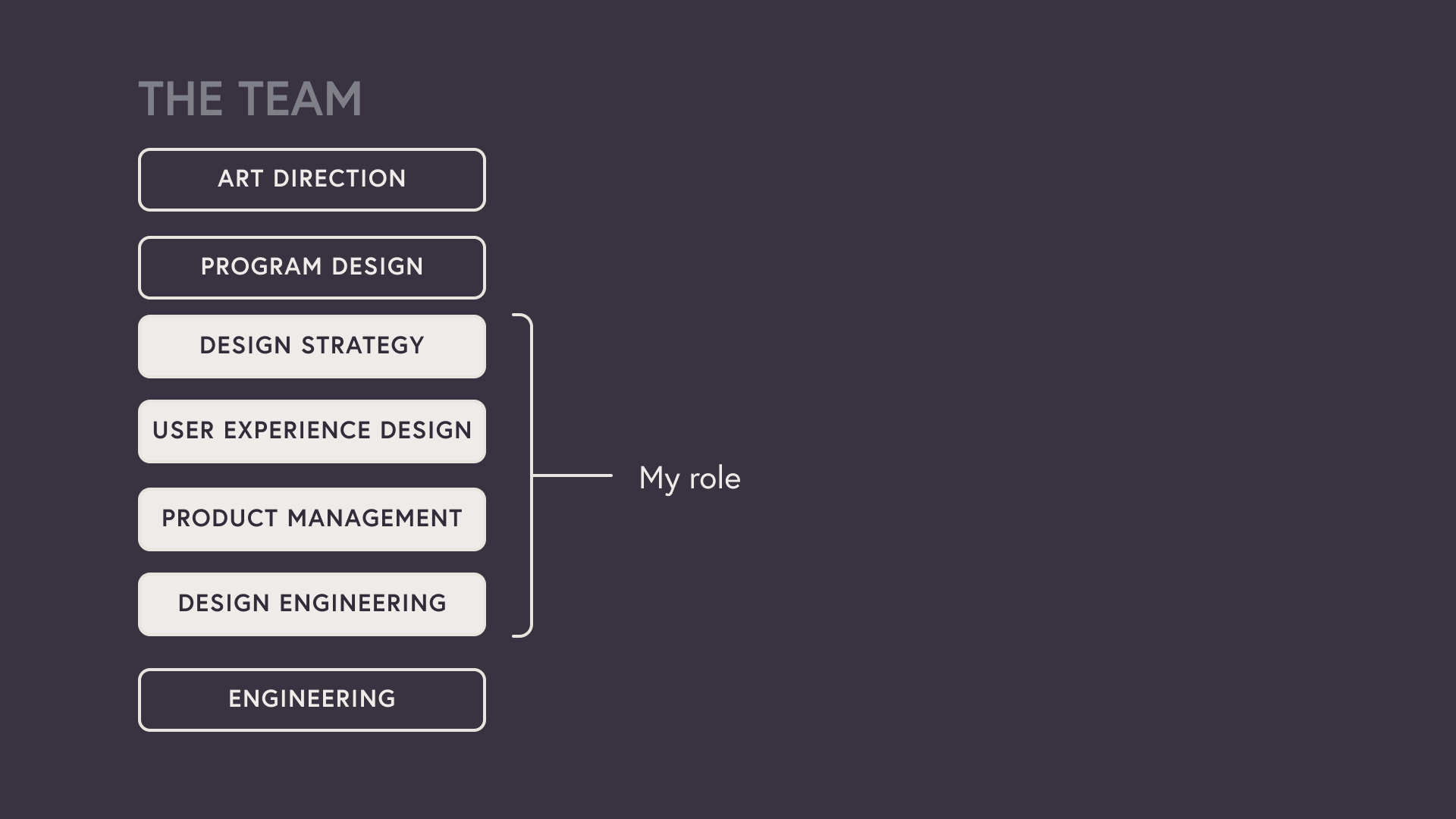
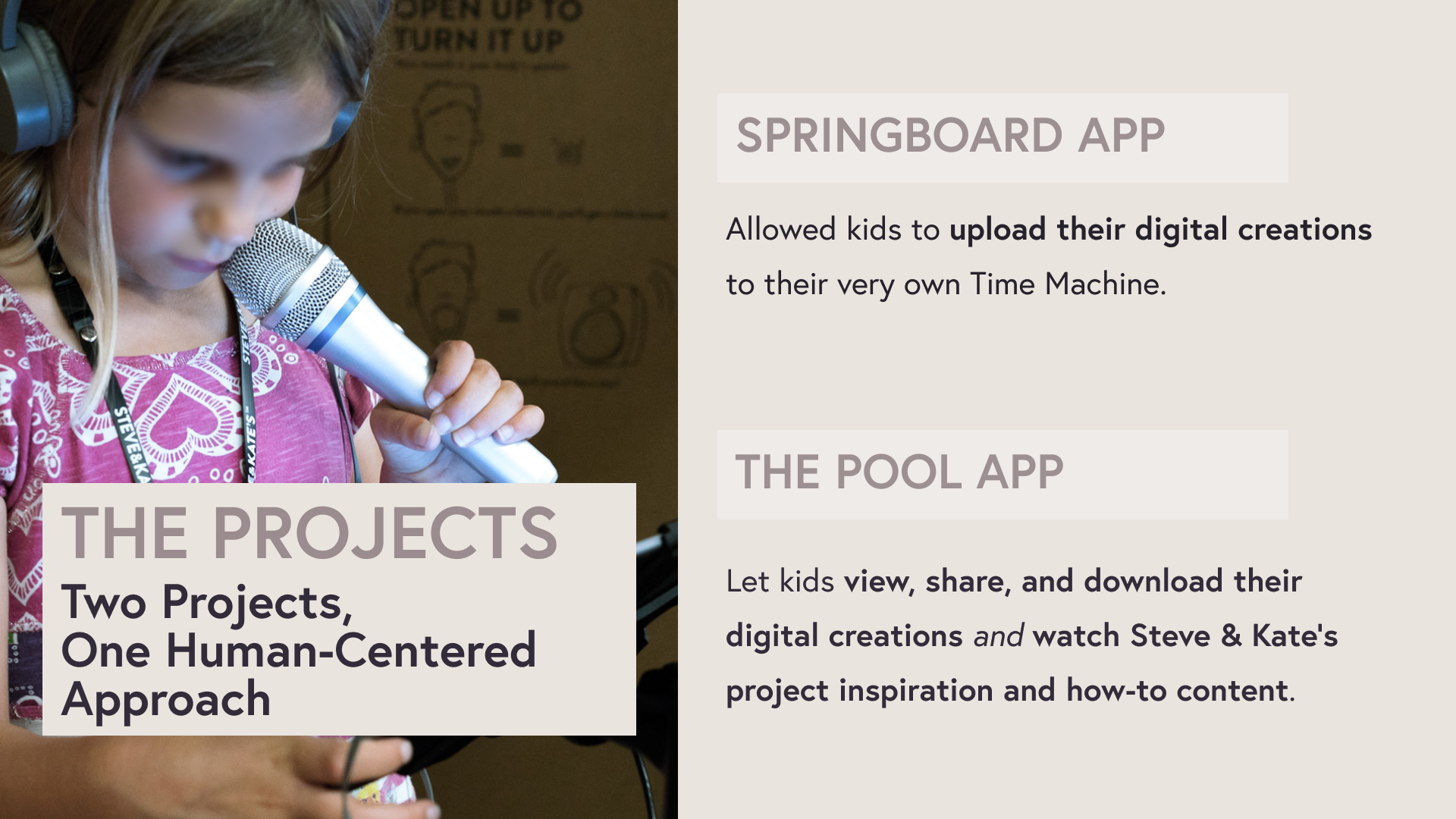
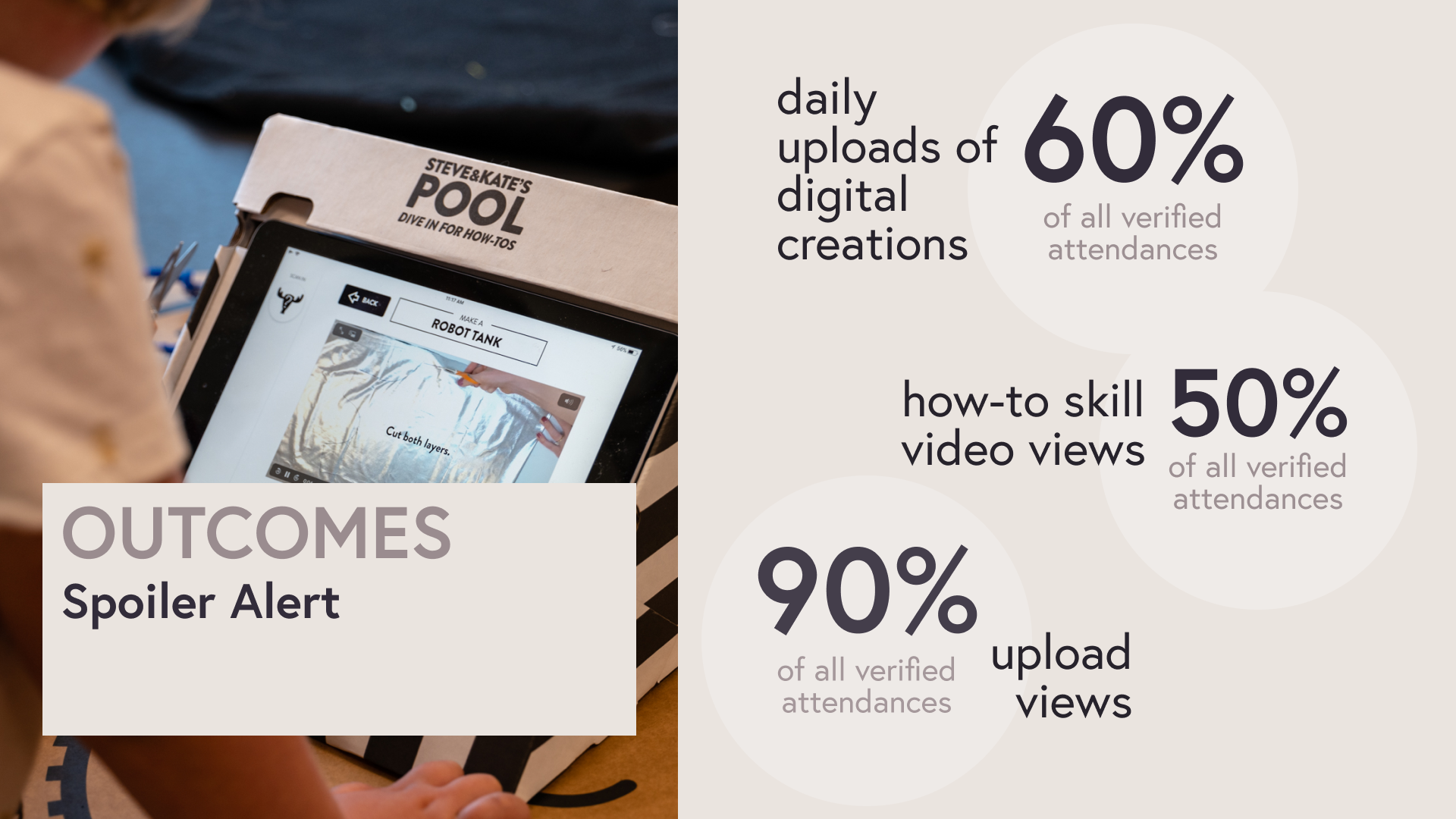
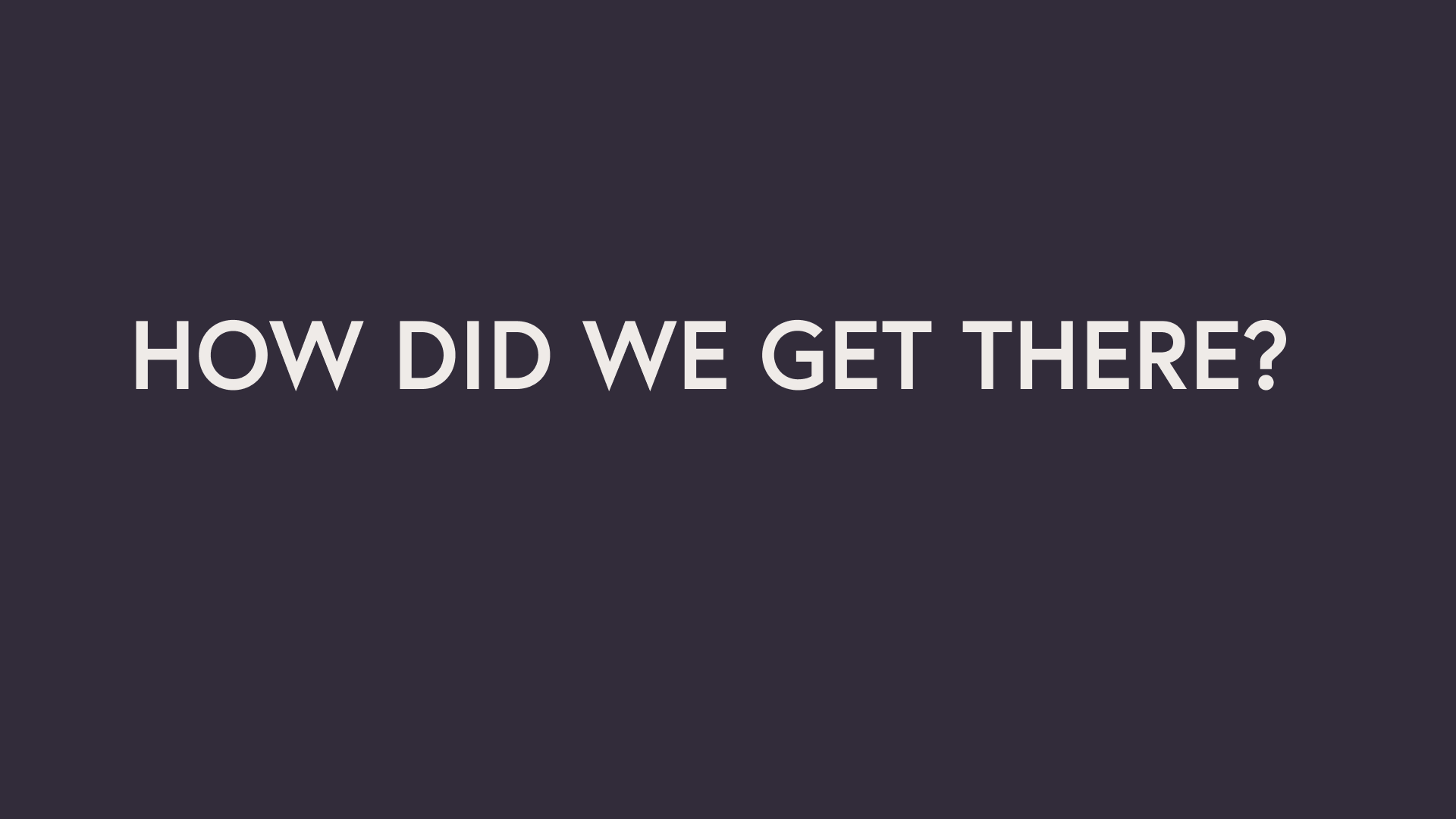
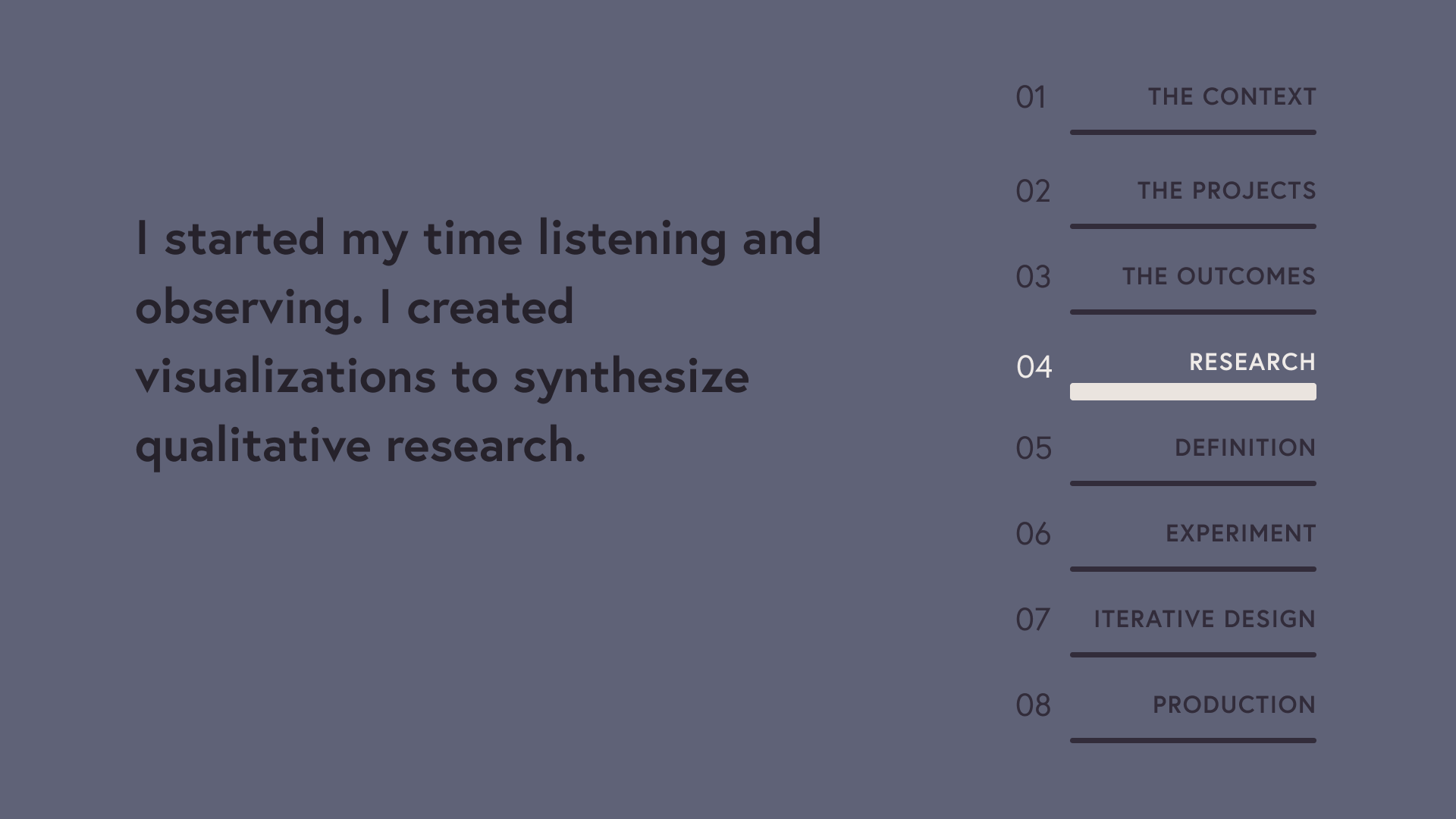
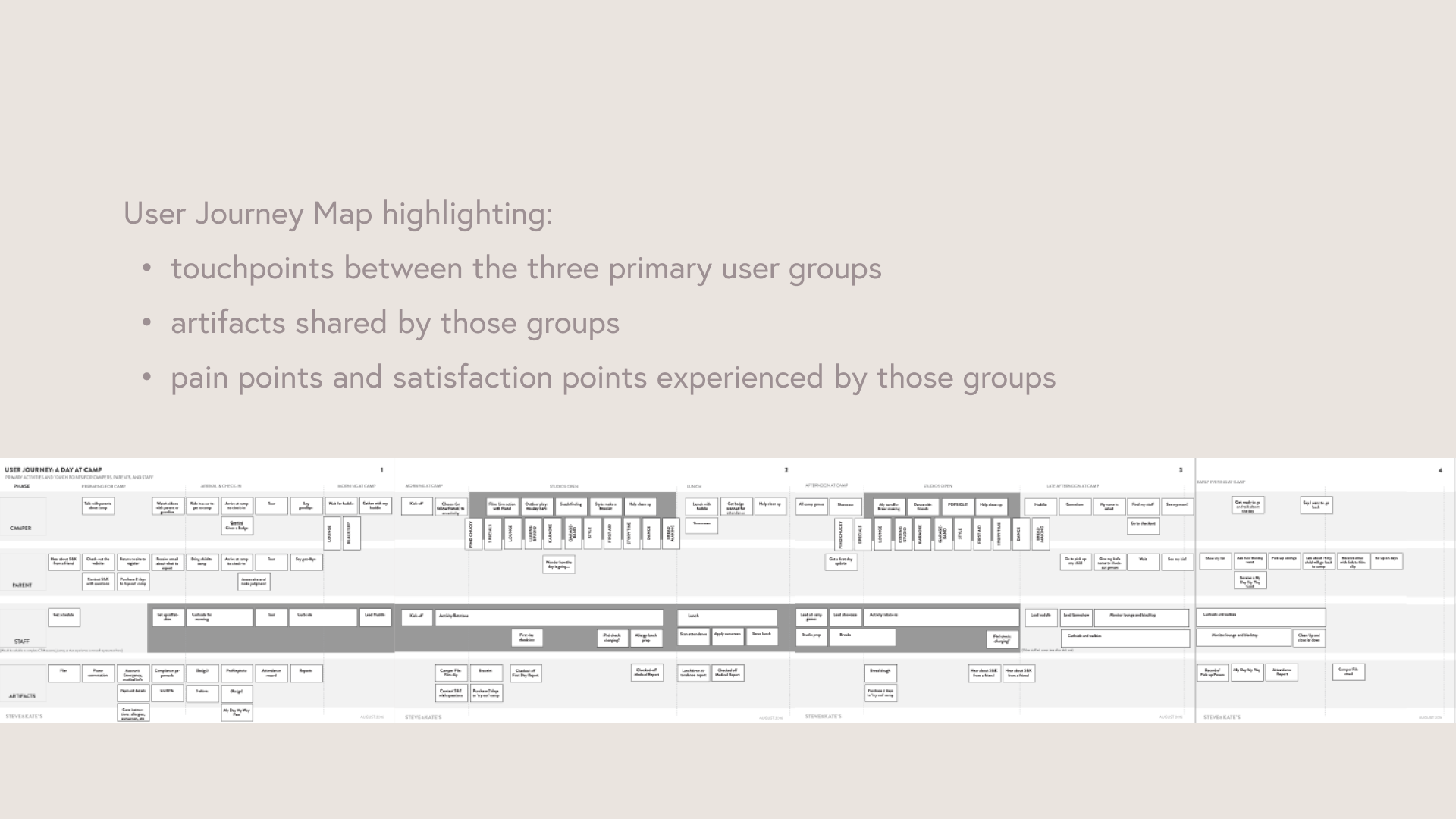
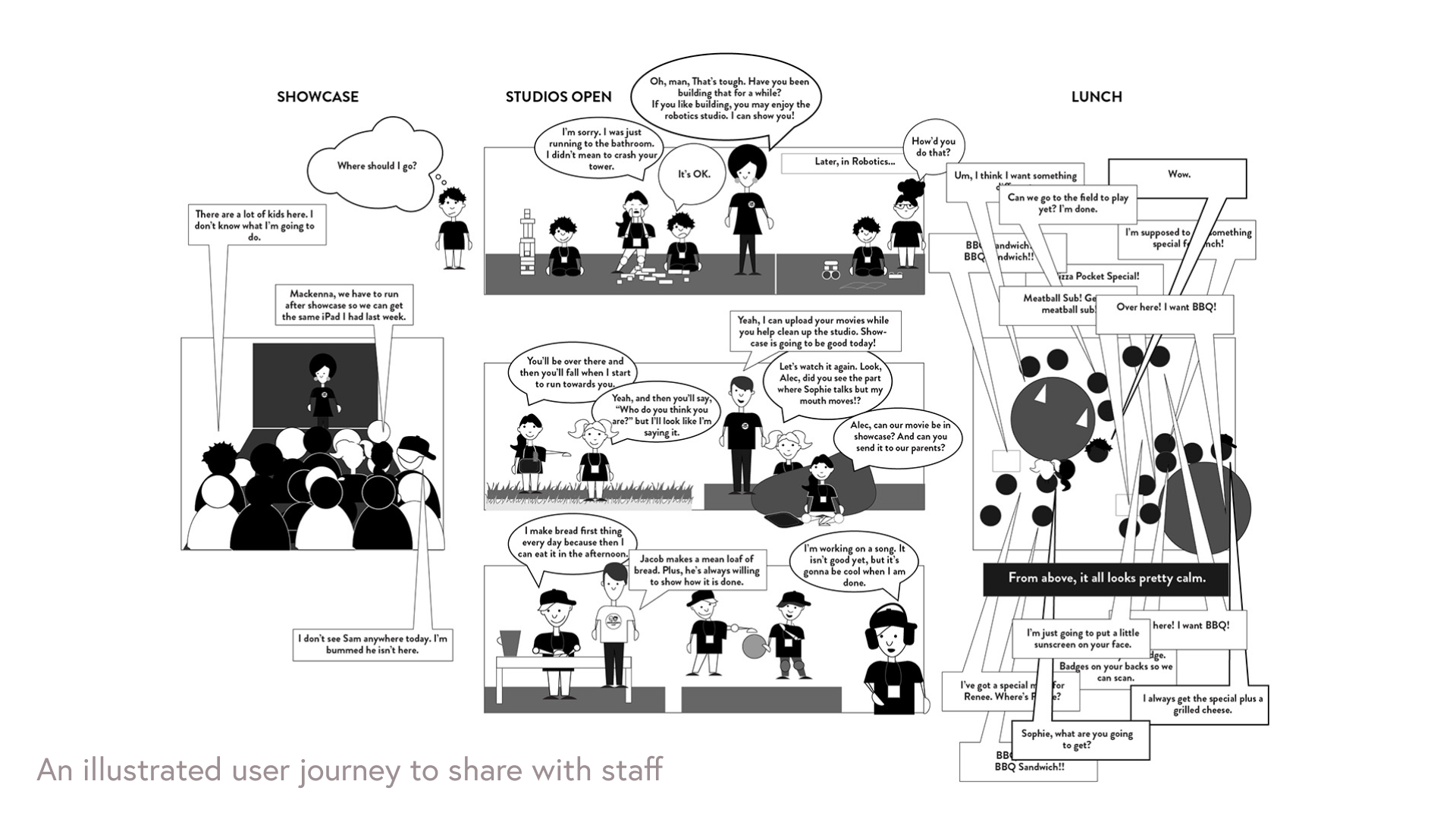
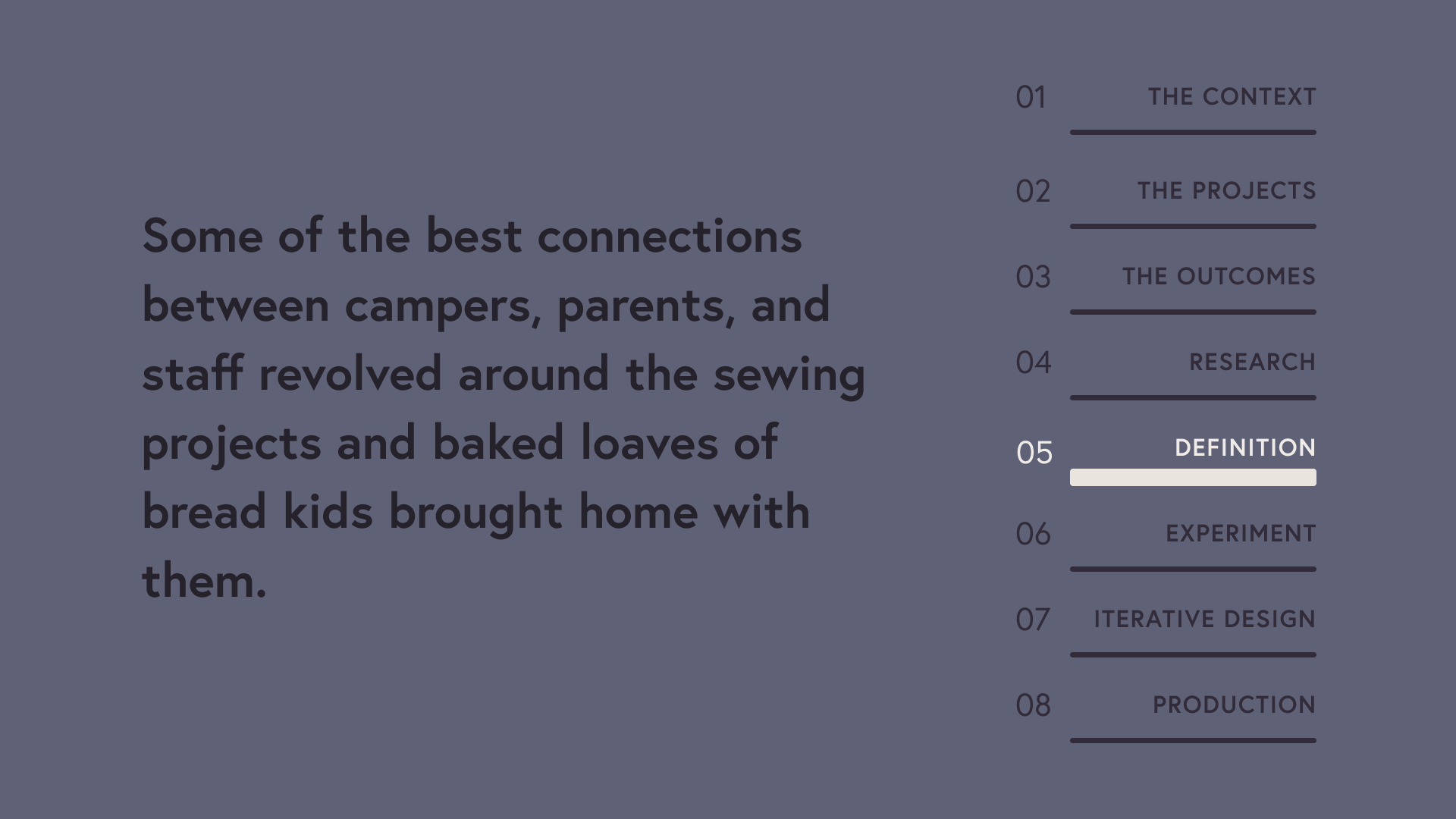
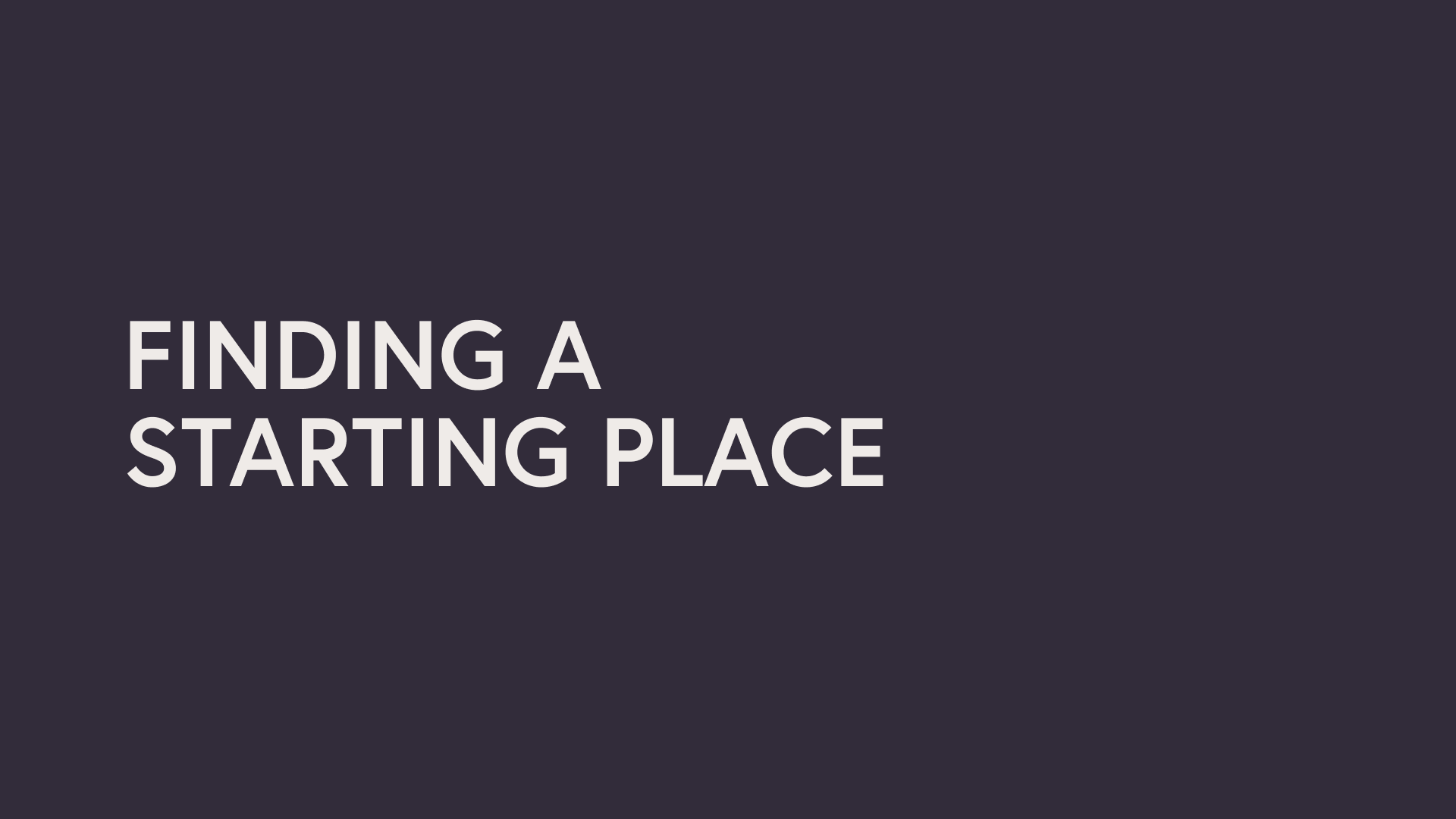
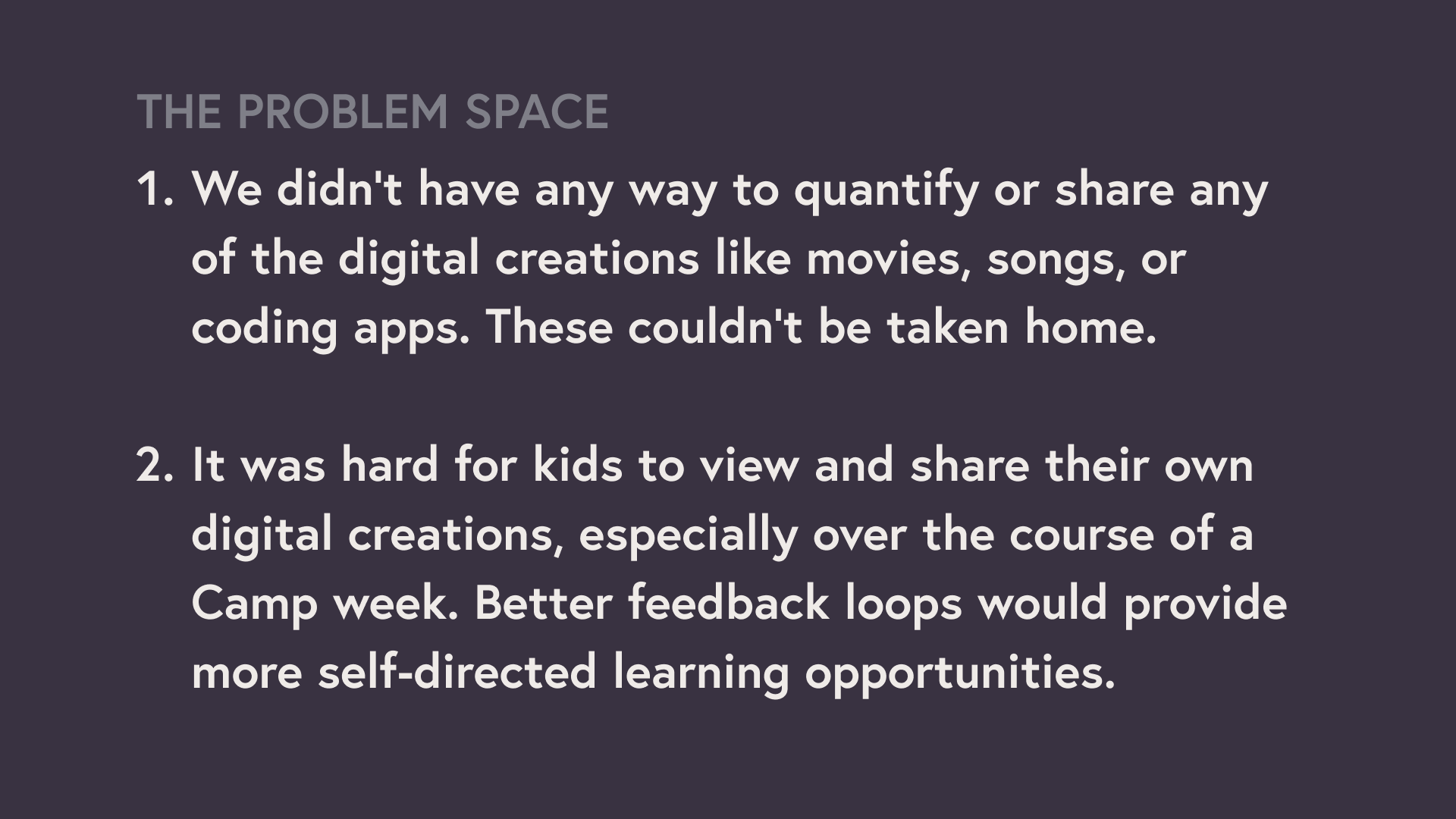
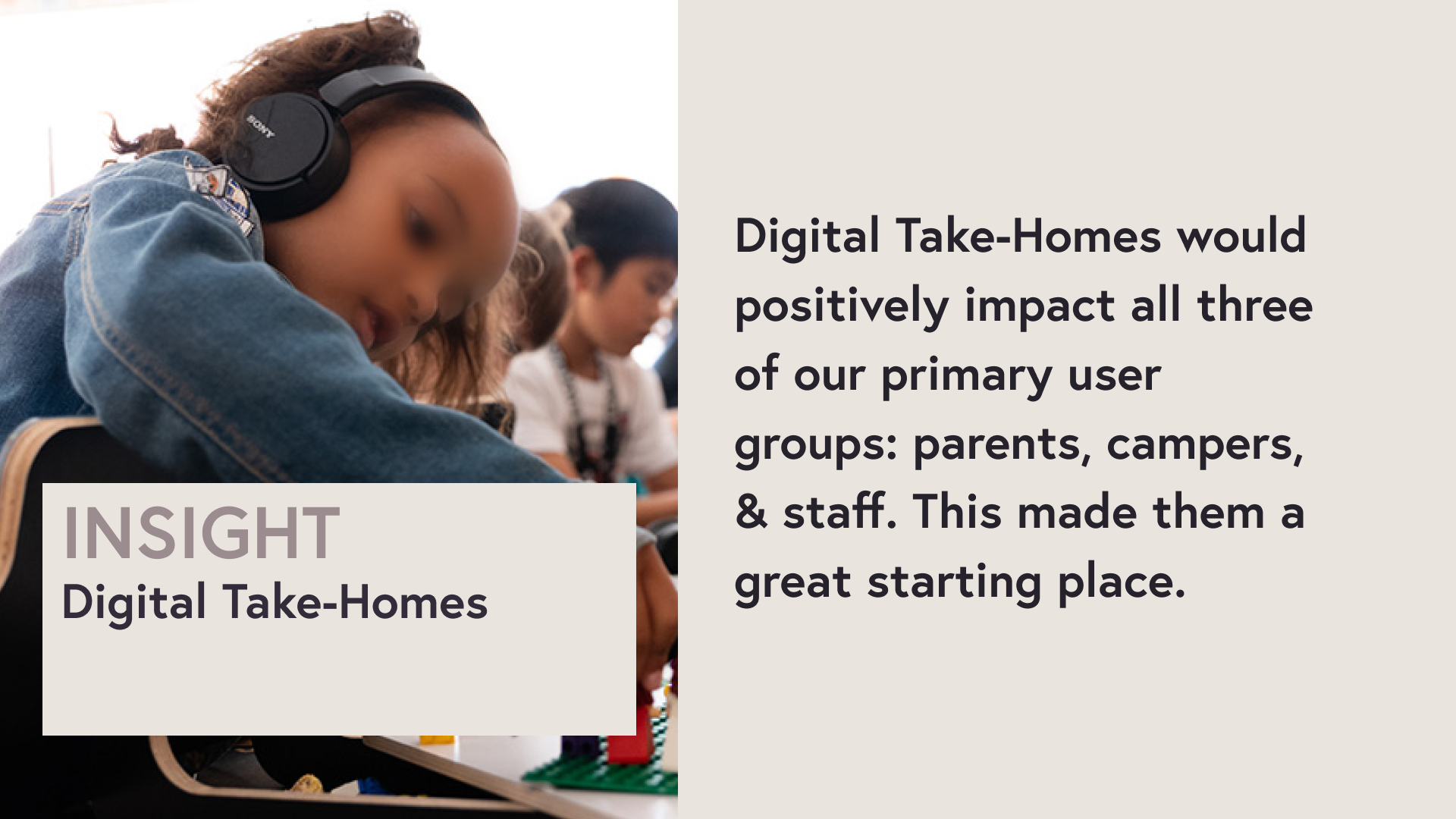
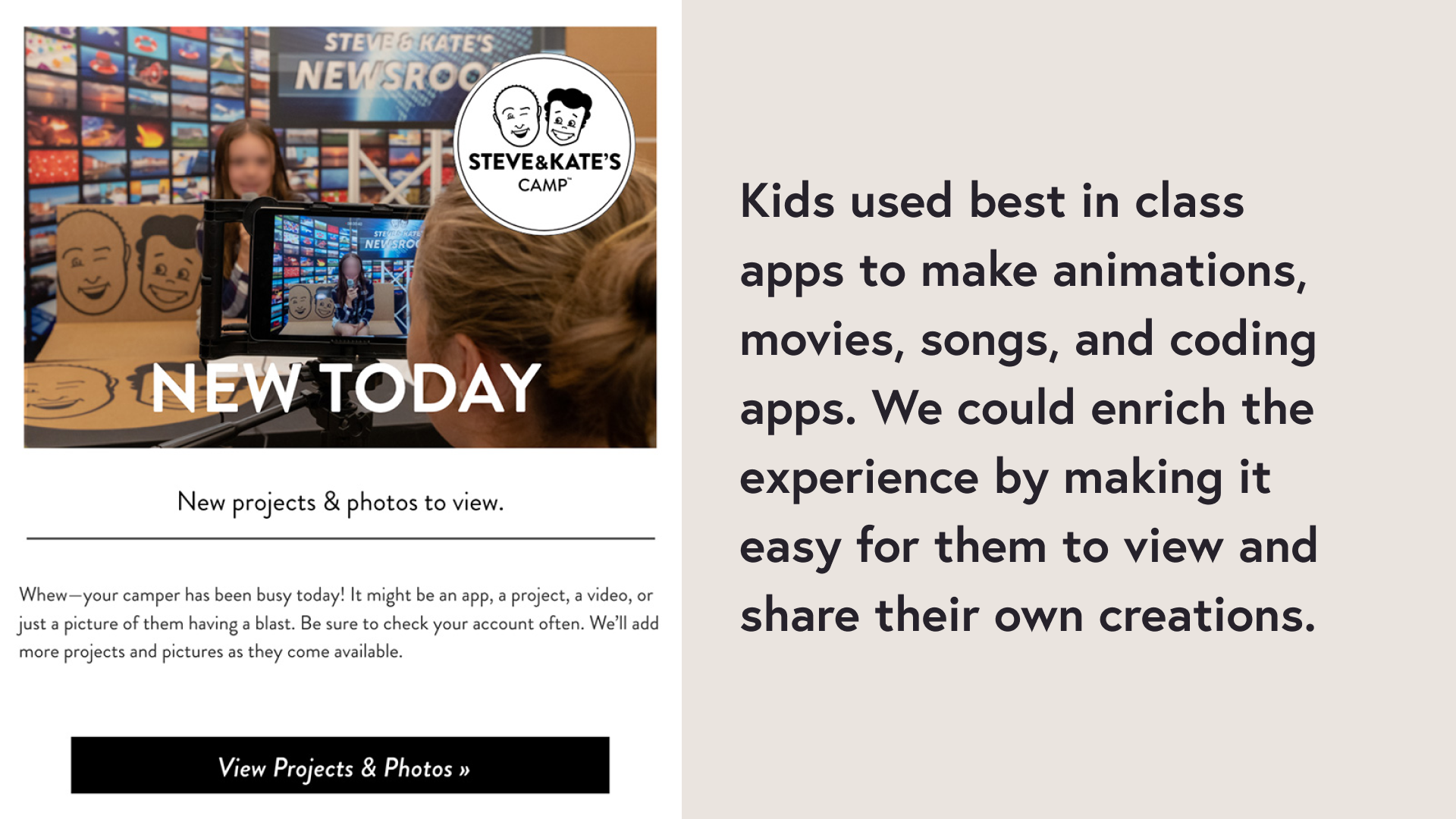
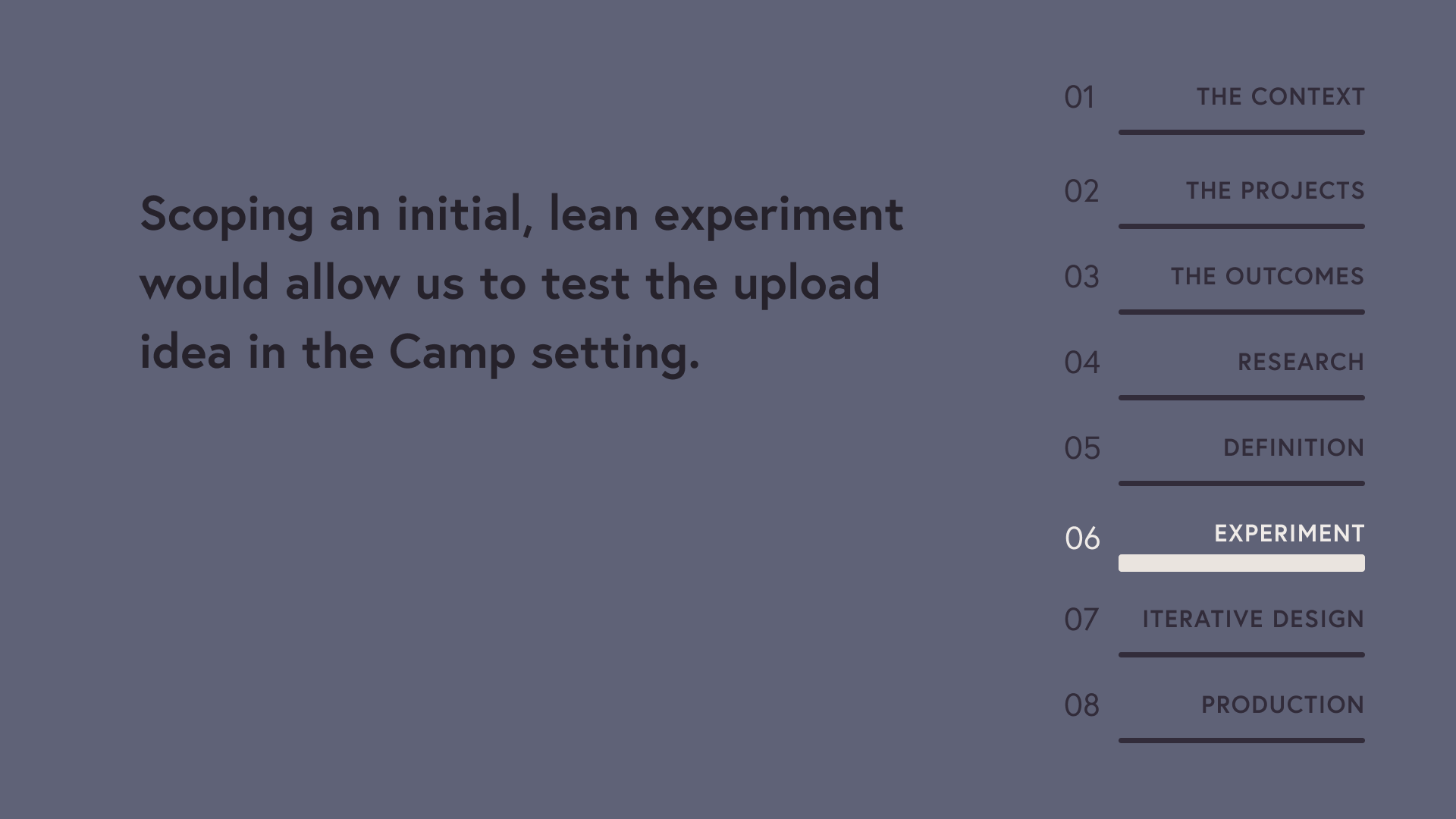
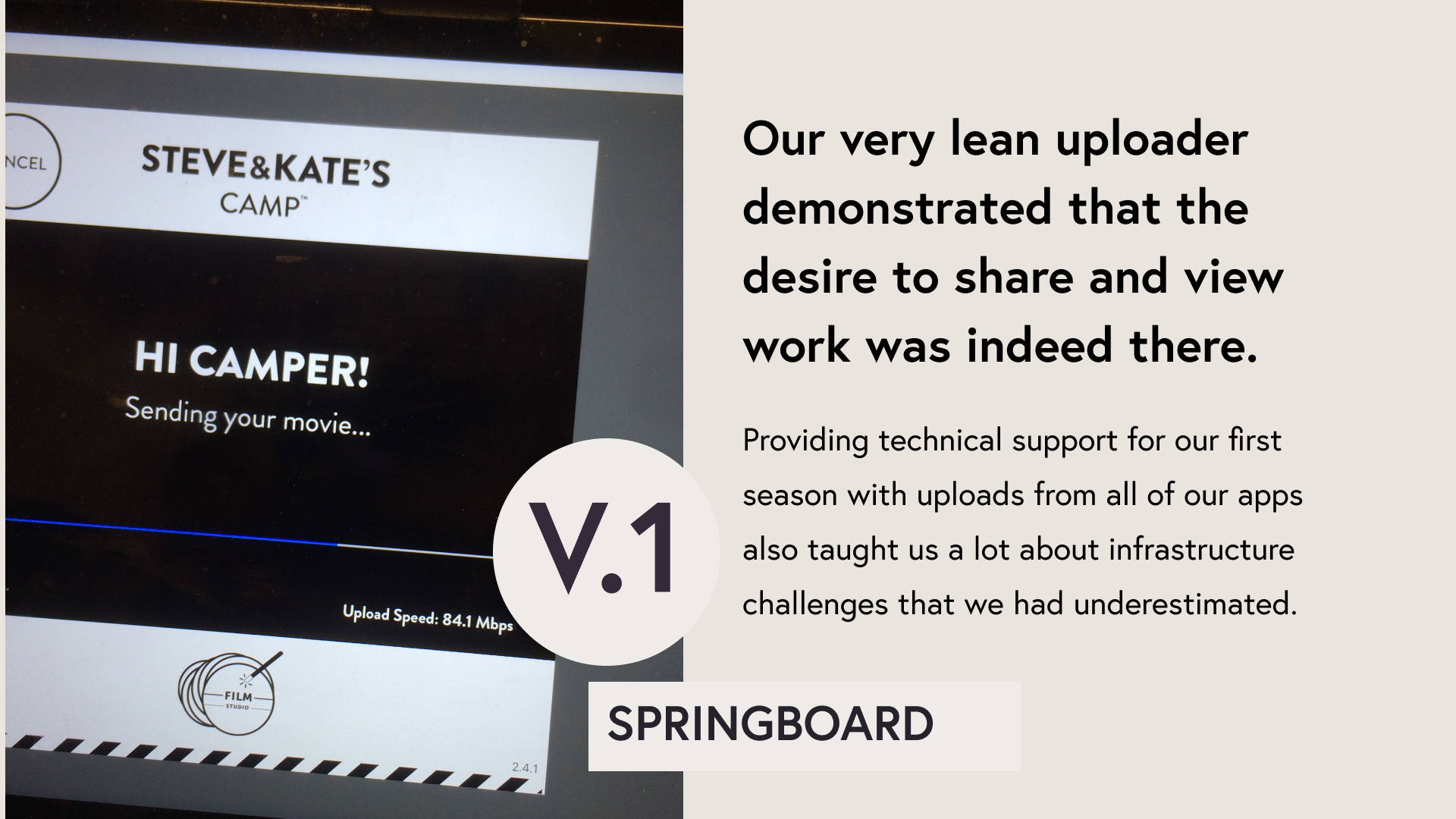
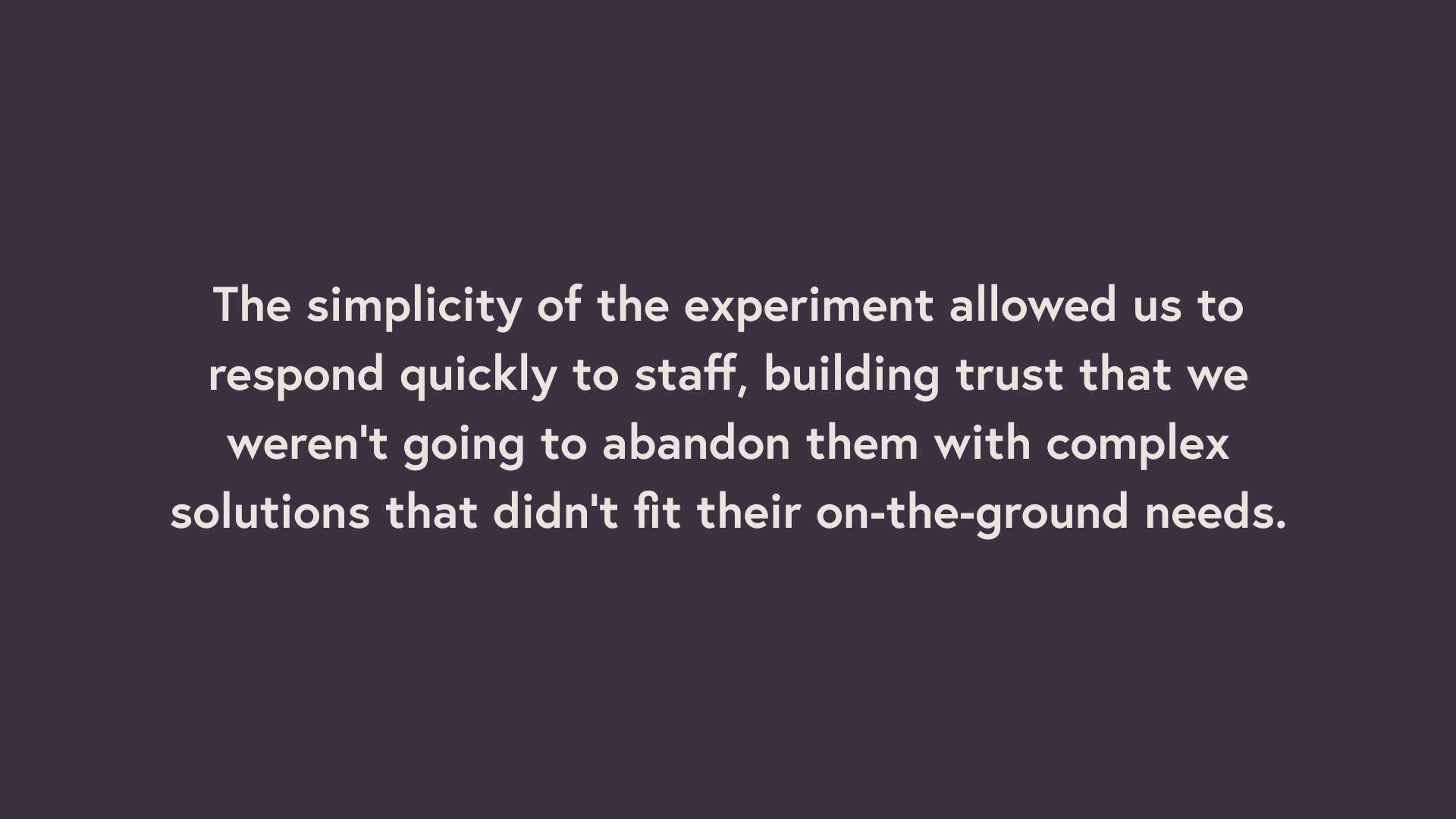
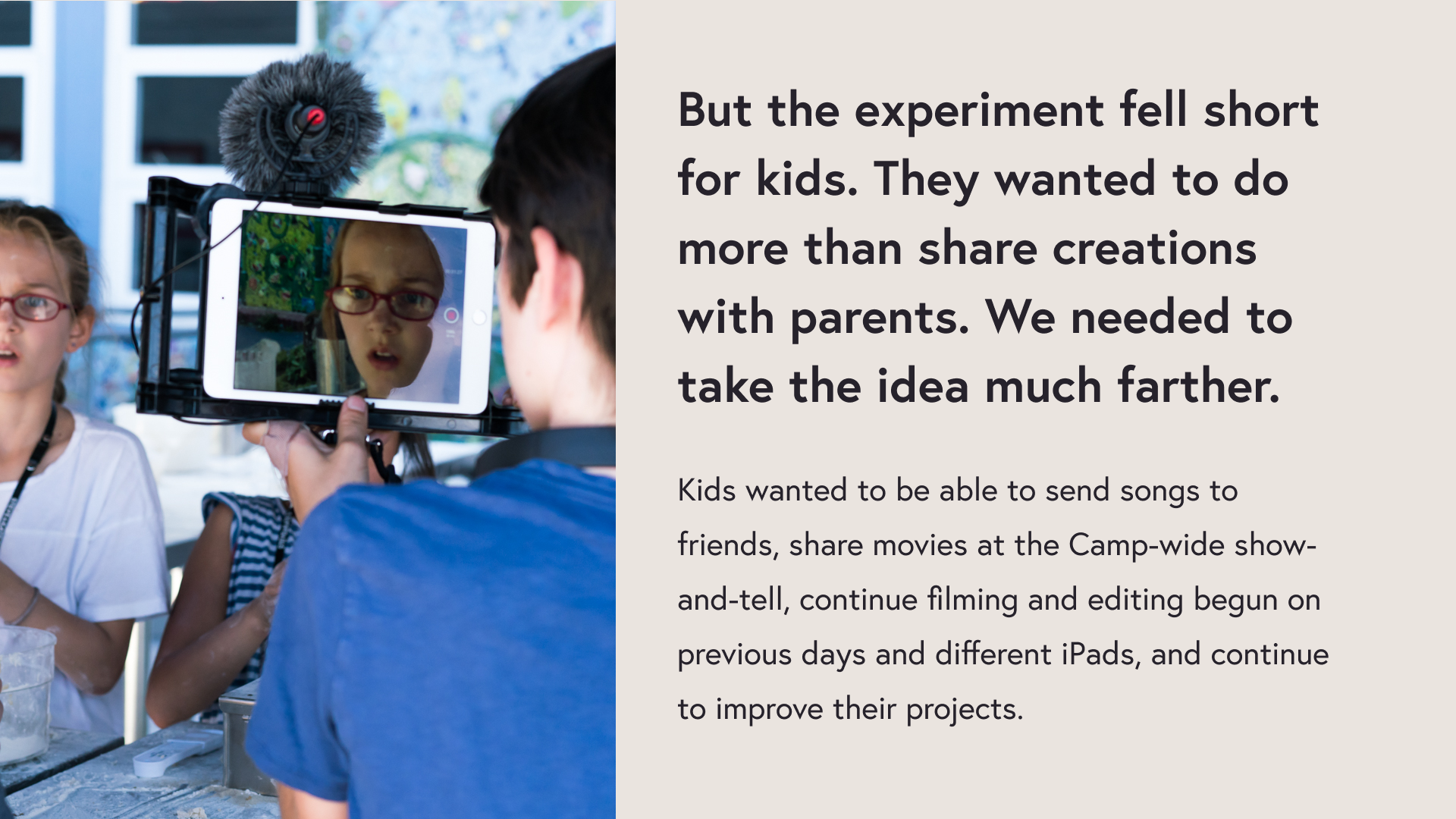
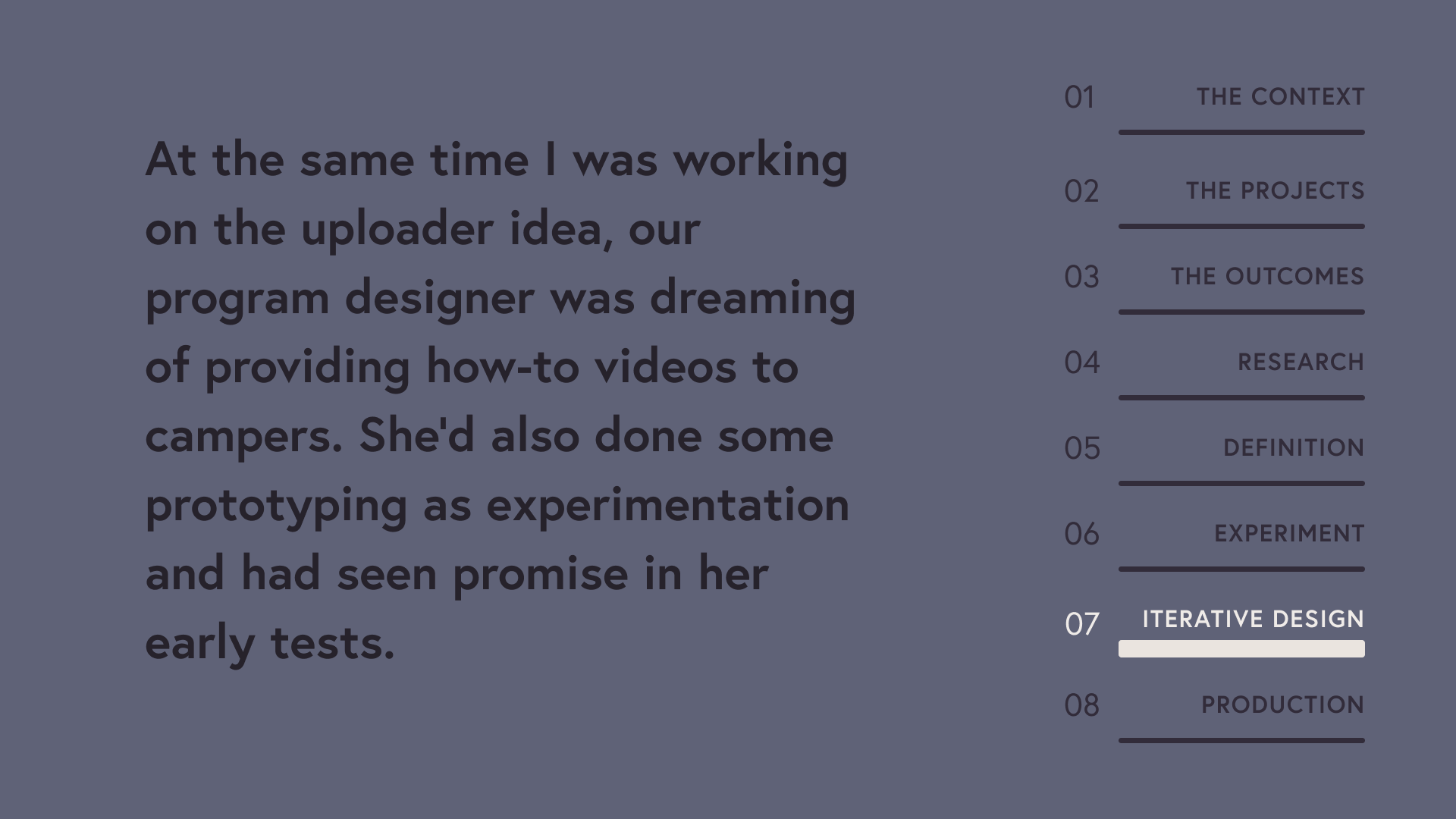
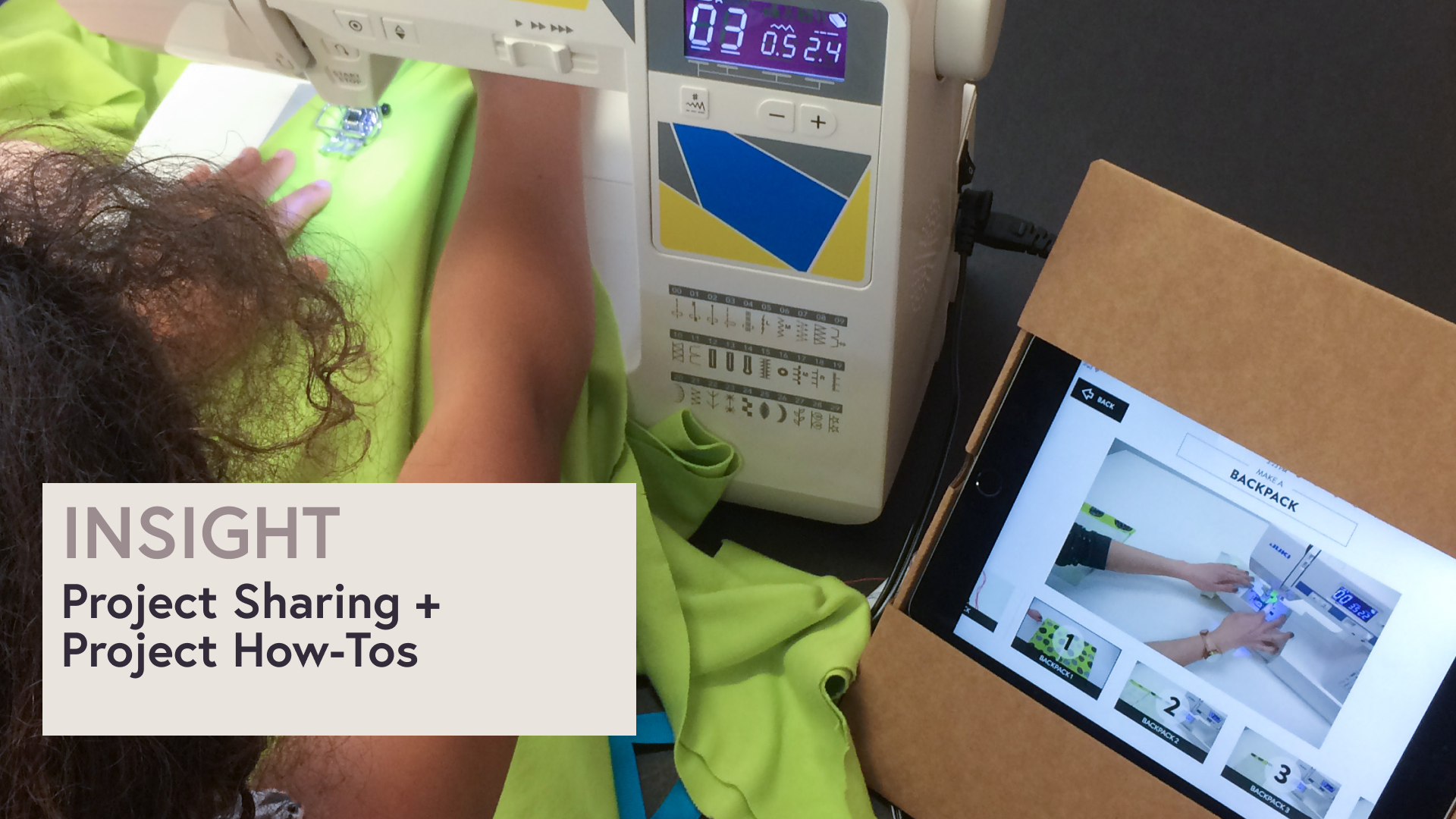
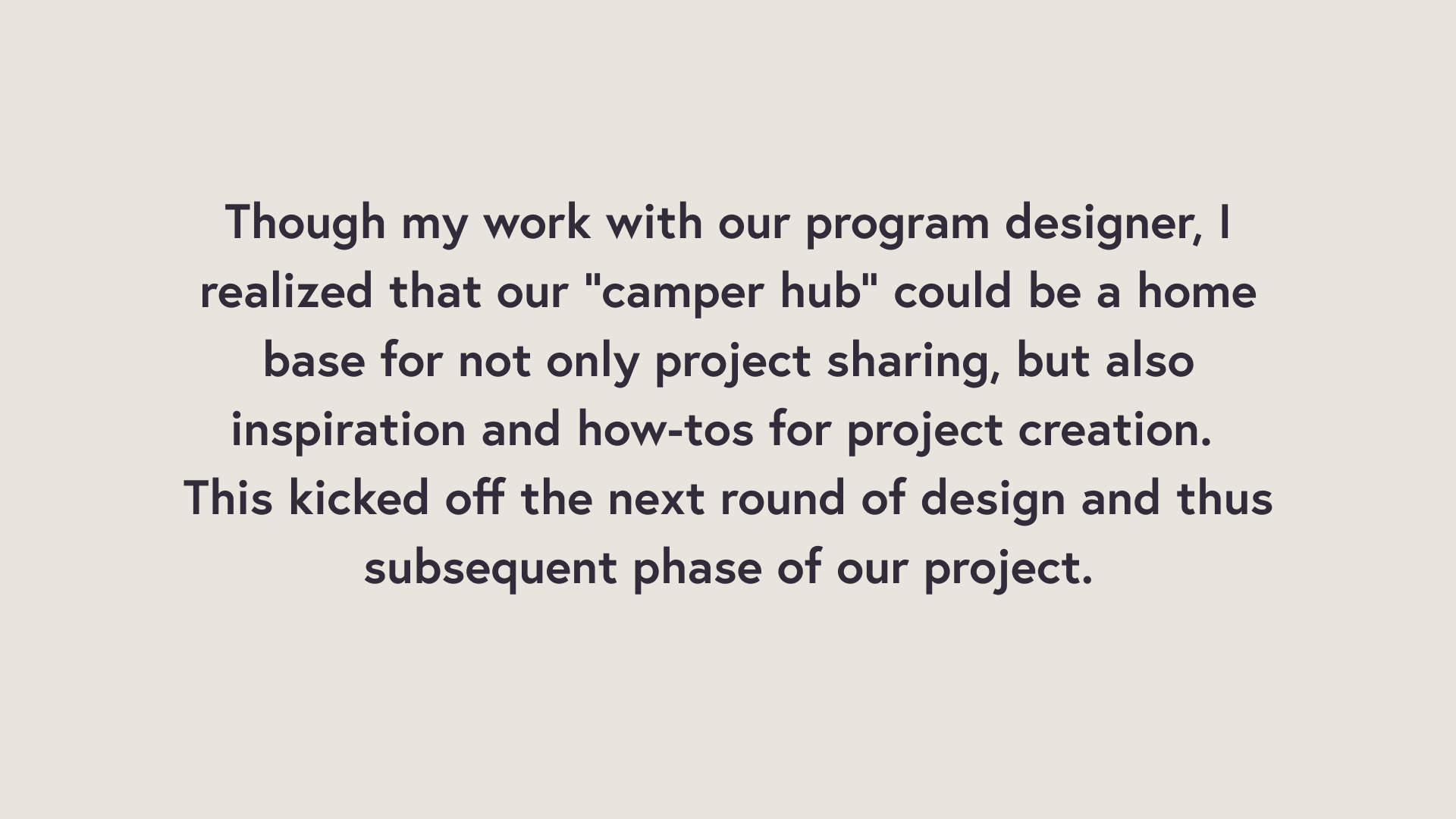
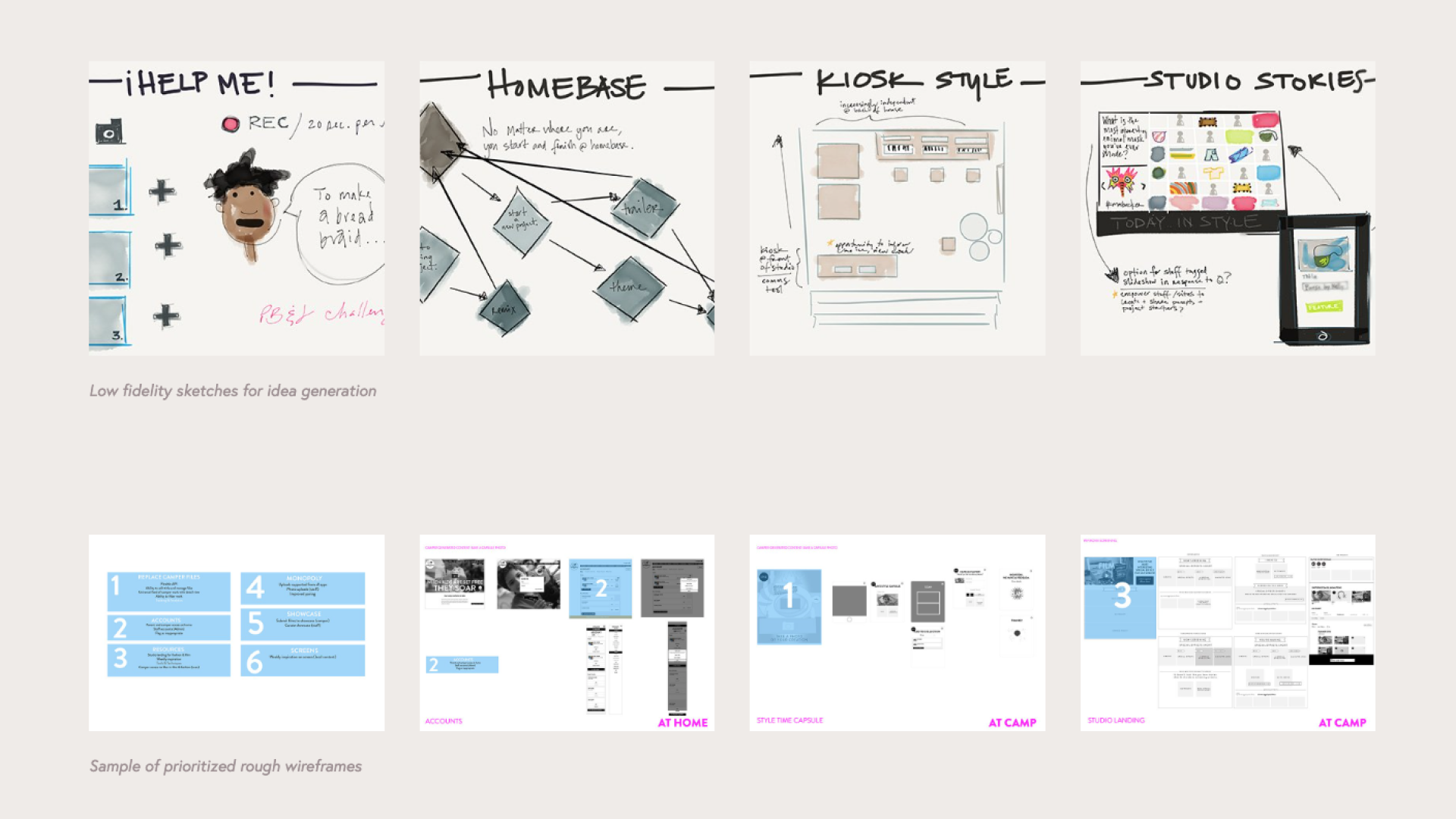
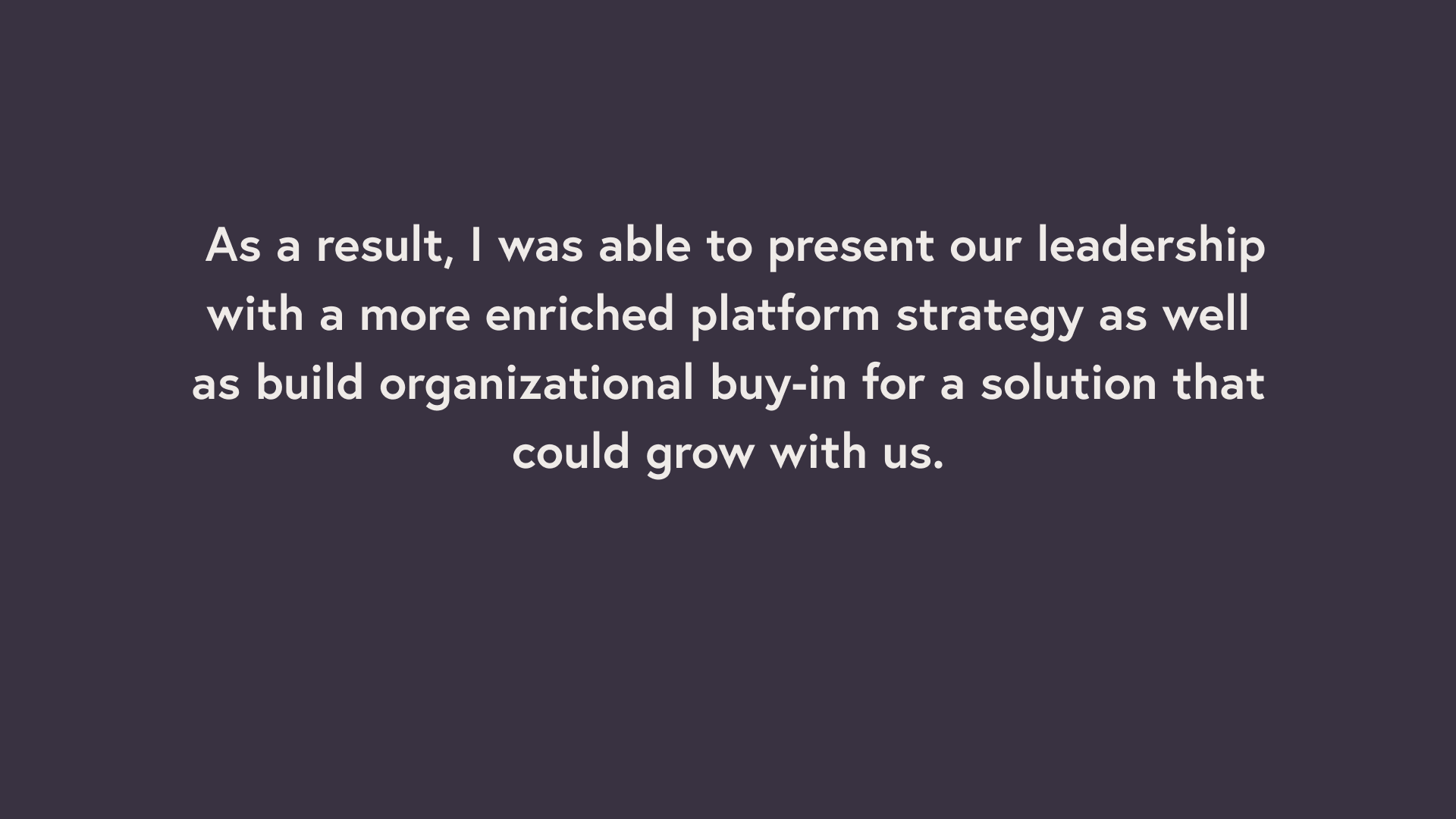
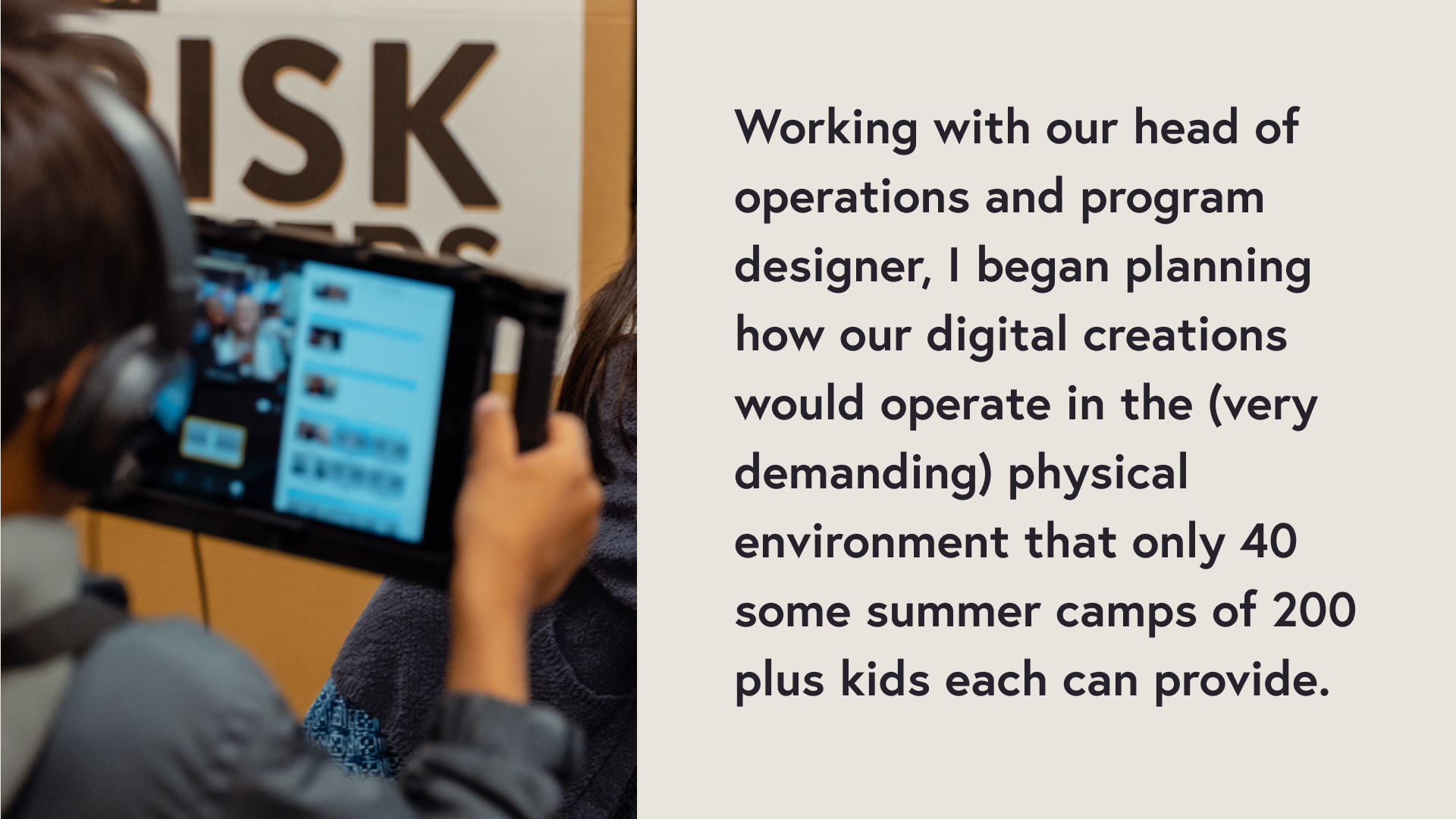
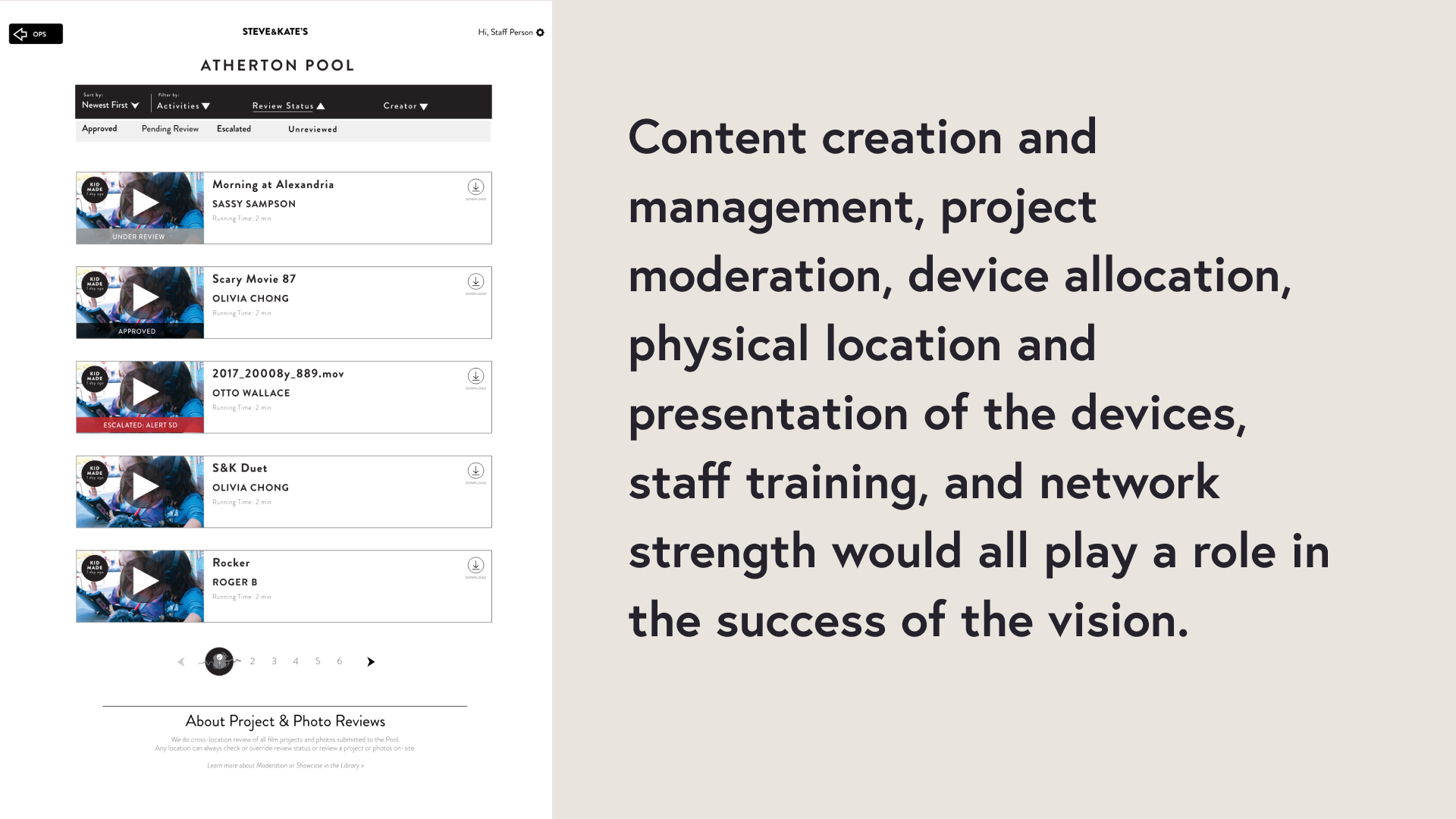
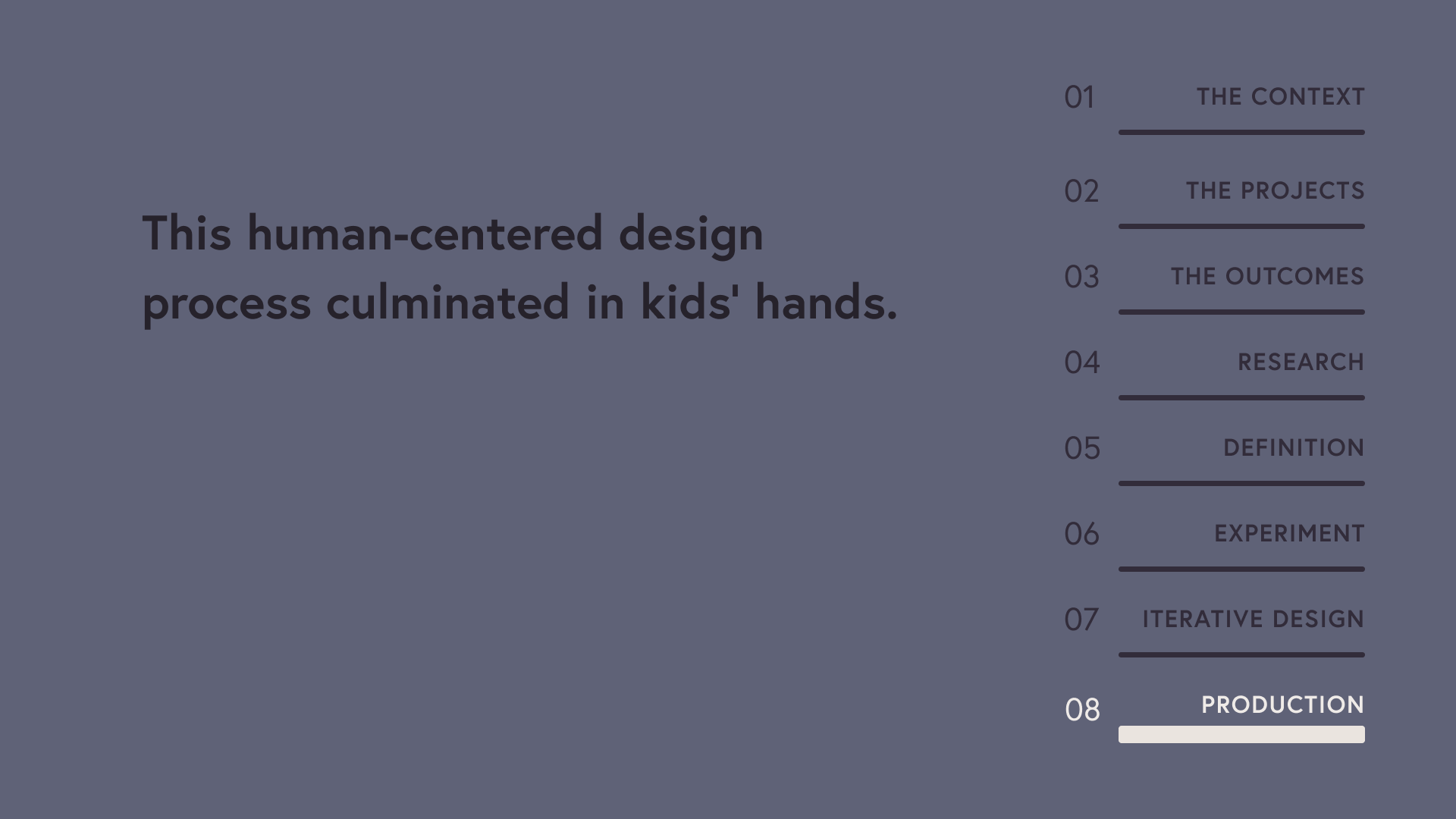
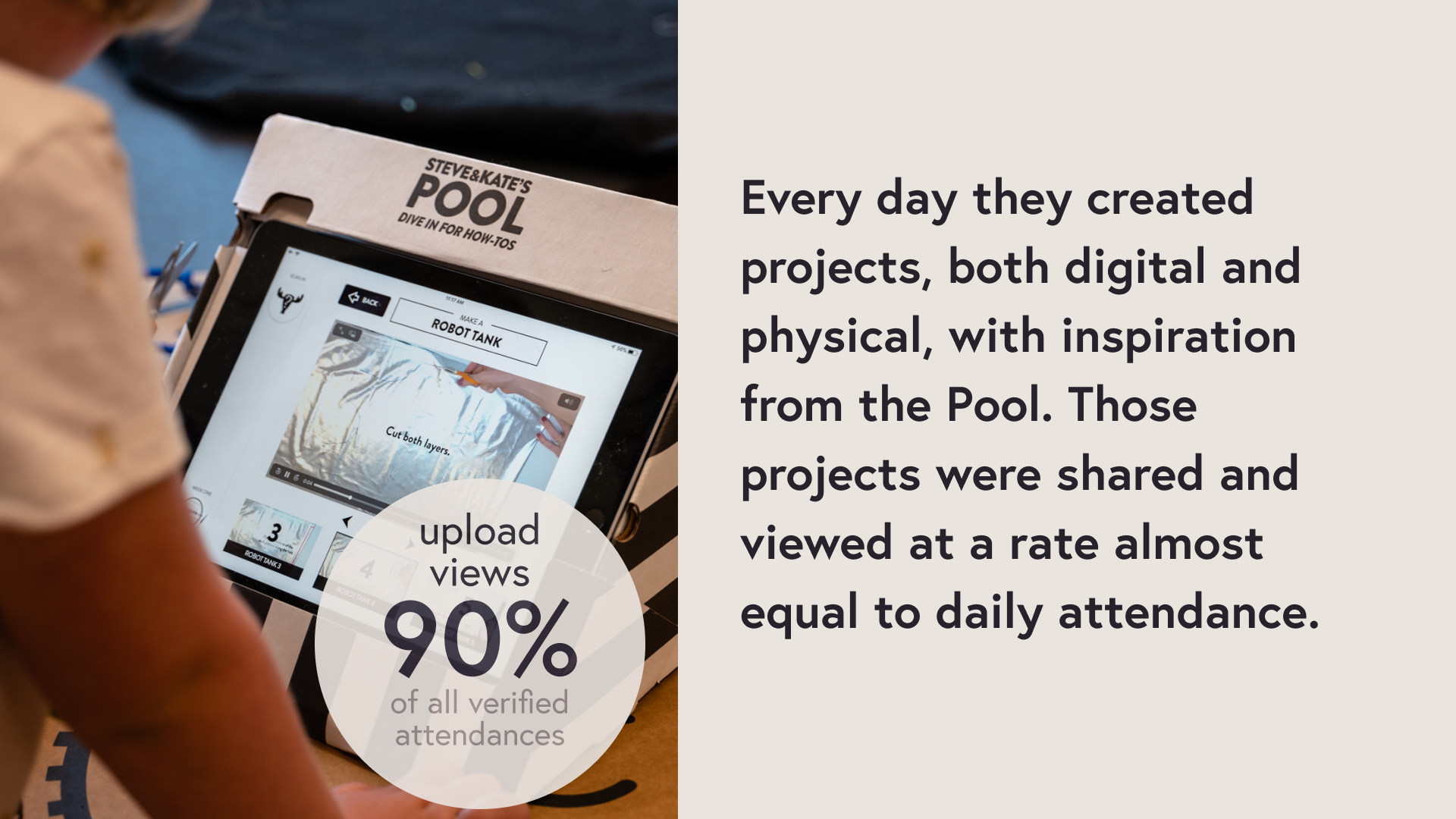
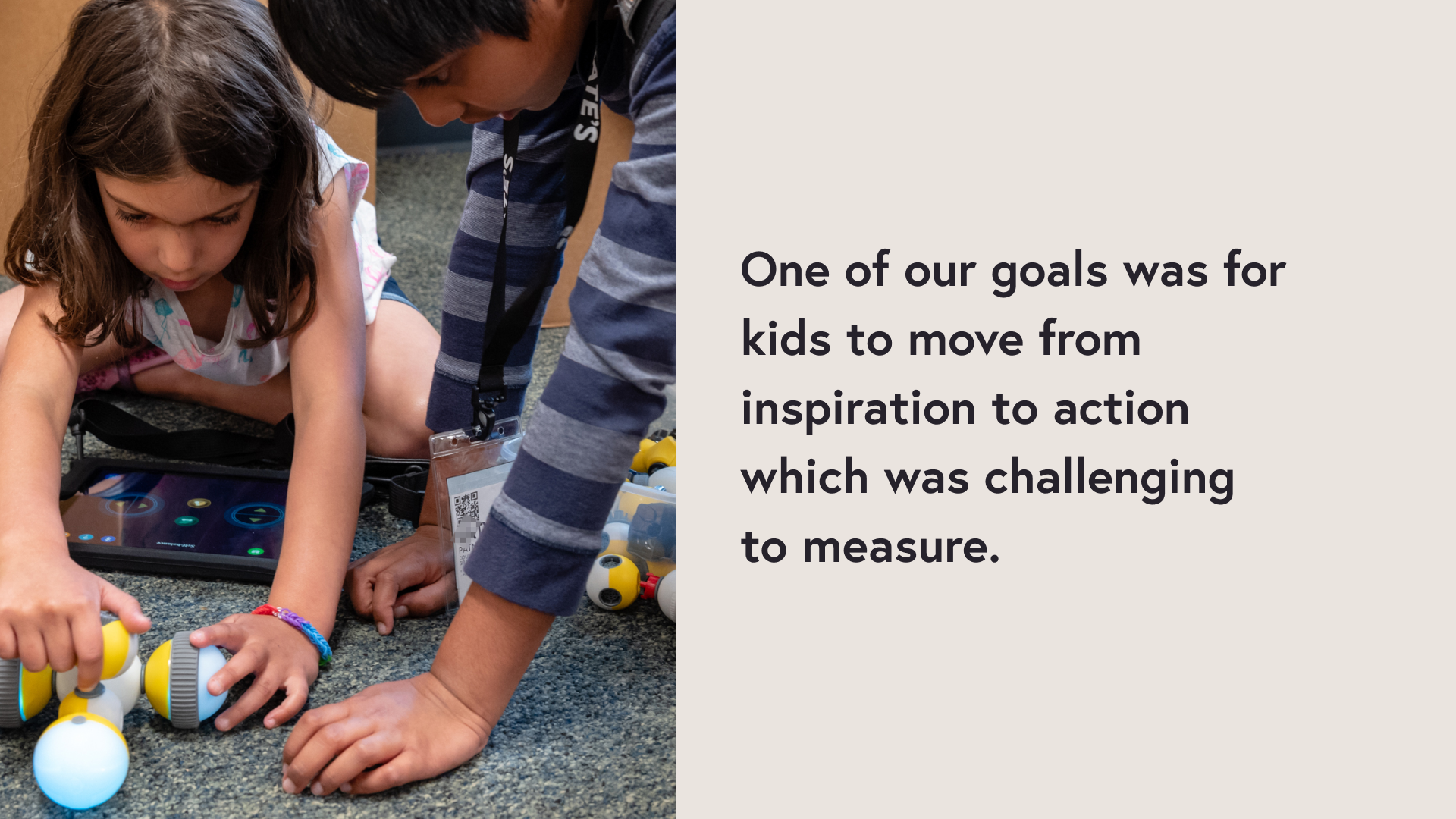
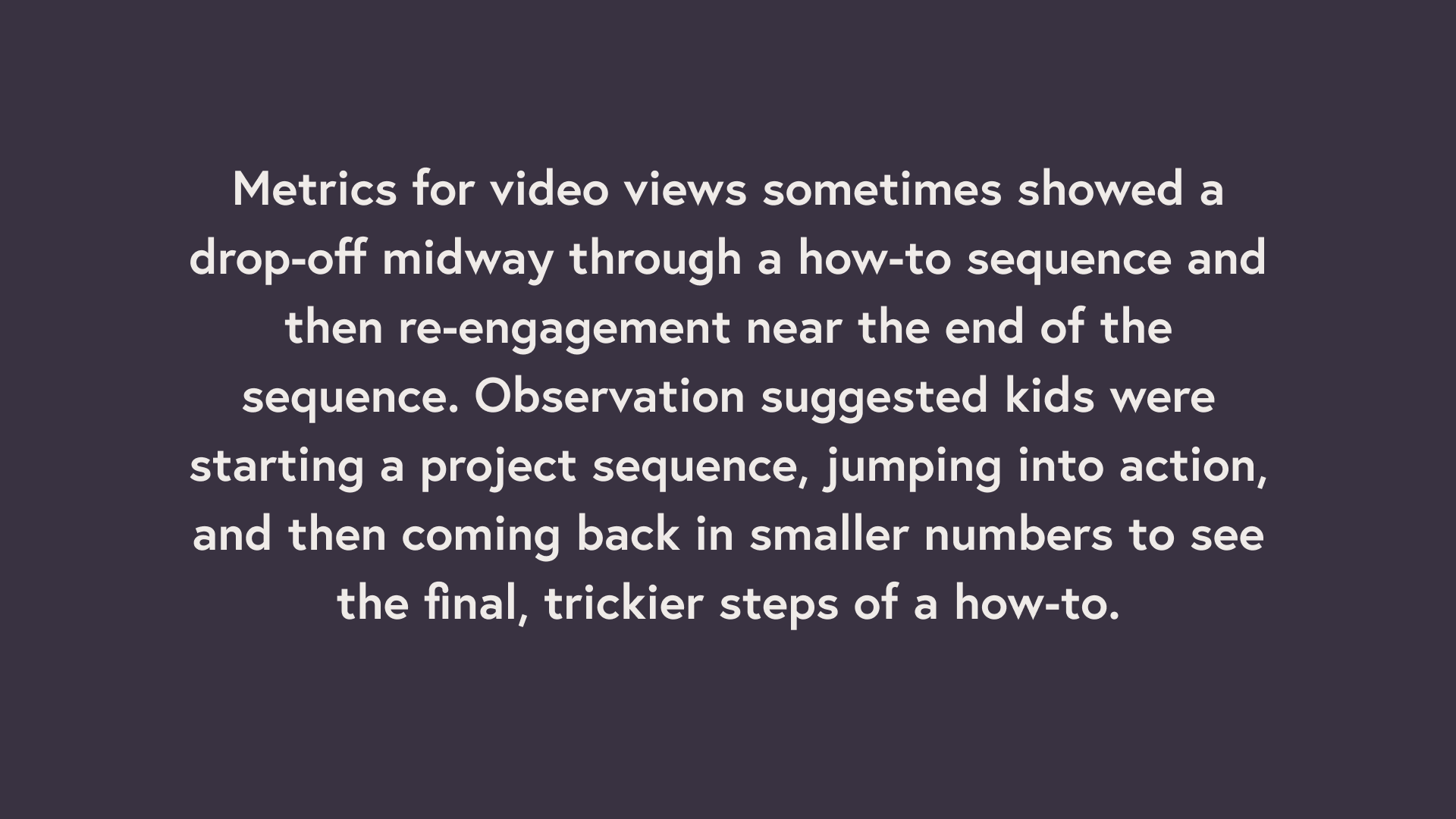
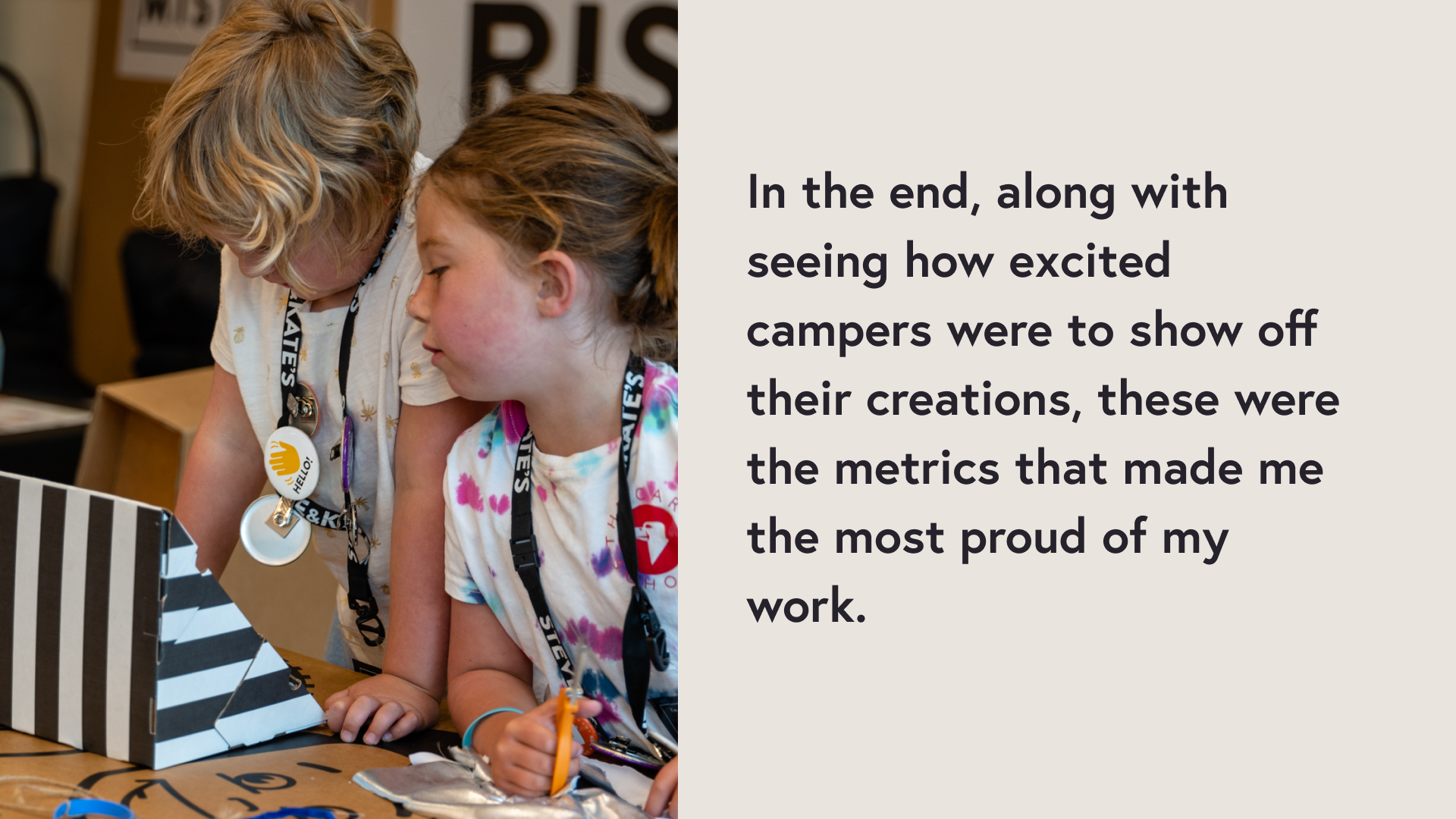
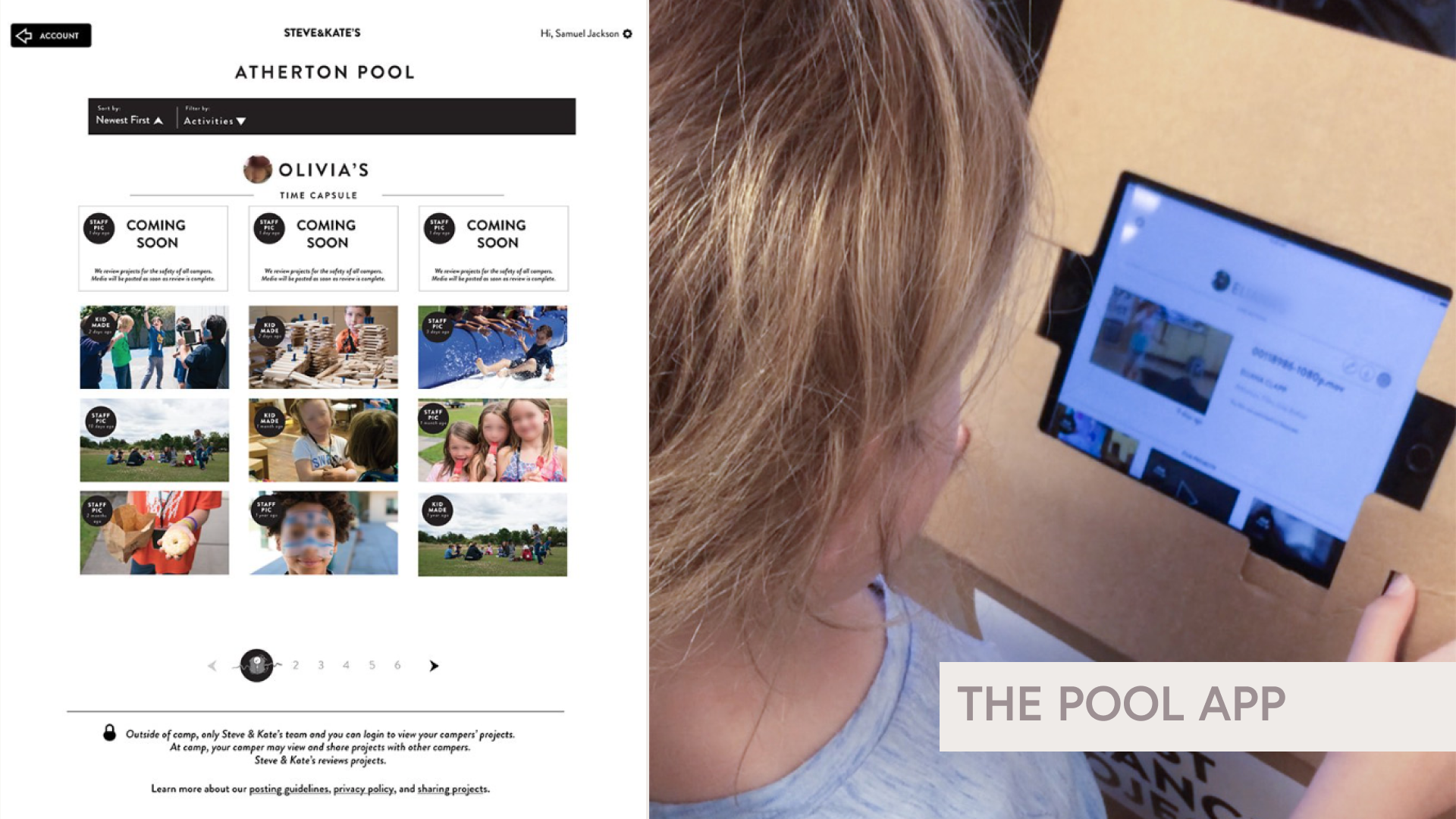
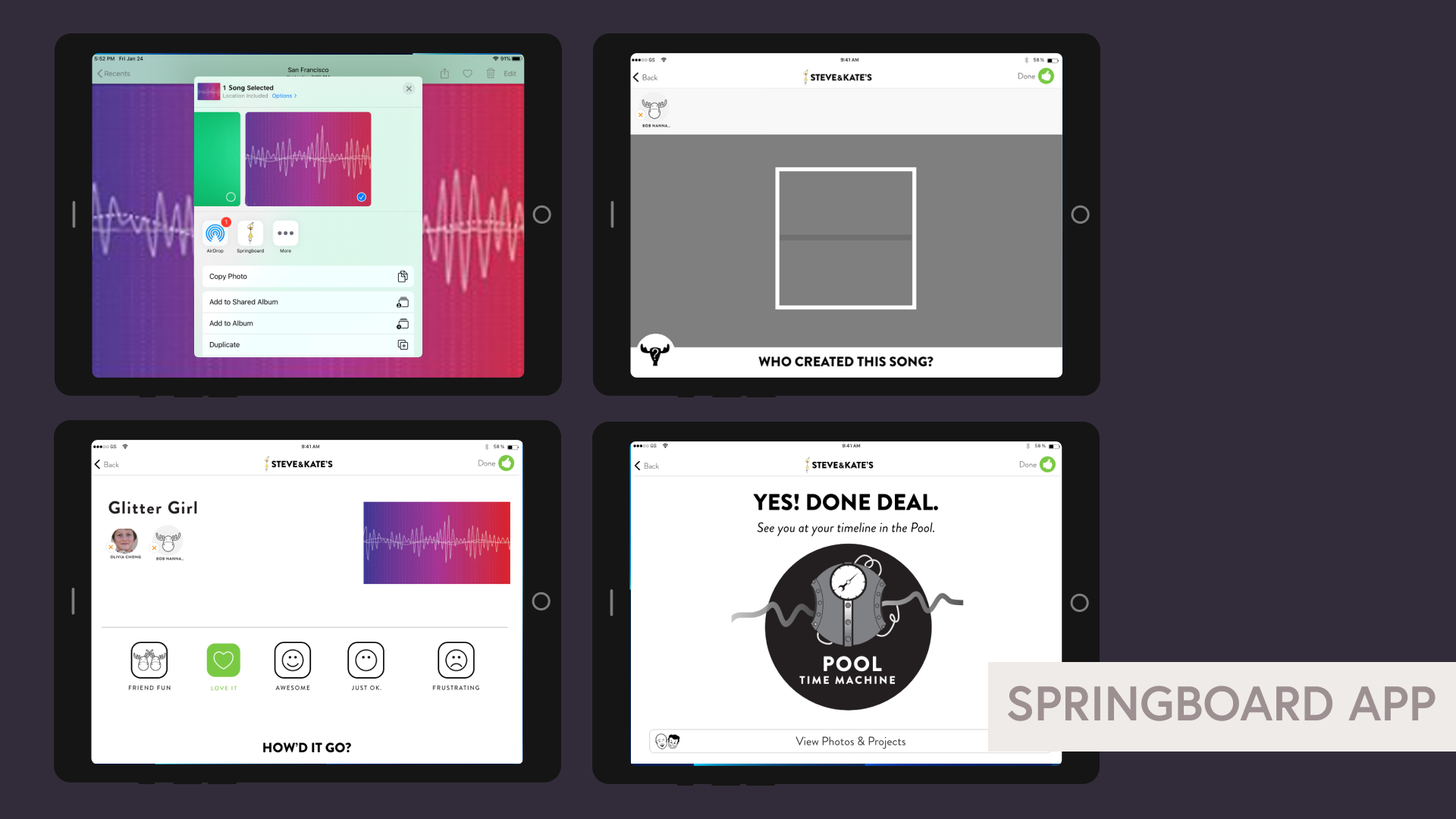
Watch a Product Demo
A video describing The Pool (the app highlighted in the human-centered case study) to kids
Related Projects
Springboard allowed campers to upload their digital creations to their very own Time Machine. In this way, they could share the songs, films, coding apps, and photography they made at Camp. After its launch, most days saw an upload count of about 50-60% of all verified attendances. Parents and kids viewed camper creations at a rate of roughly two times the number of uploads each day.
The Pool became the digital platform for Camp. It gave campers access to view, share, and download their own (uploaded from Springboard) work. It also allowed them to view Steve & Kate’s project inspiration and how-to content for help getting started and unstuck with their projects. Before this product, self-directed learning in the studios relied on printed content alone. After its launch, campers viewed weekly Program Arc content with new skills (backpack making or animation tips, for example). We regularly saw skill video views at a rate of about 50% of all attendances and campers viewing their own creations at Camp at upwards of 90% of all attendances.

